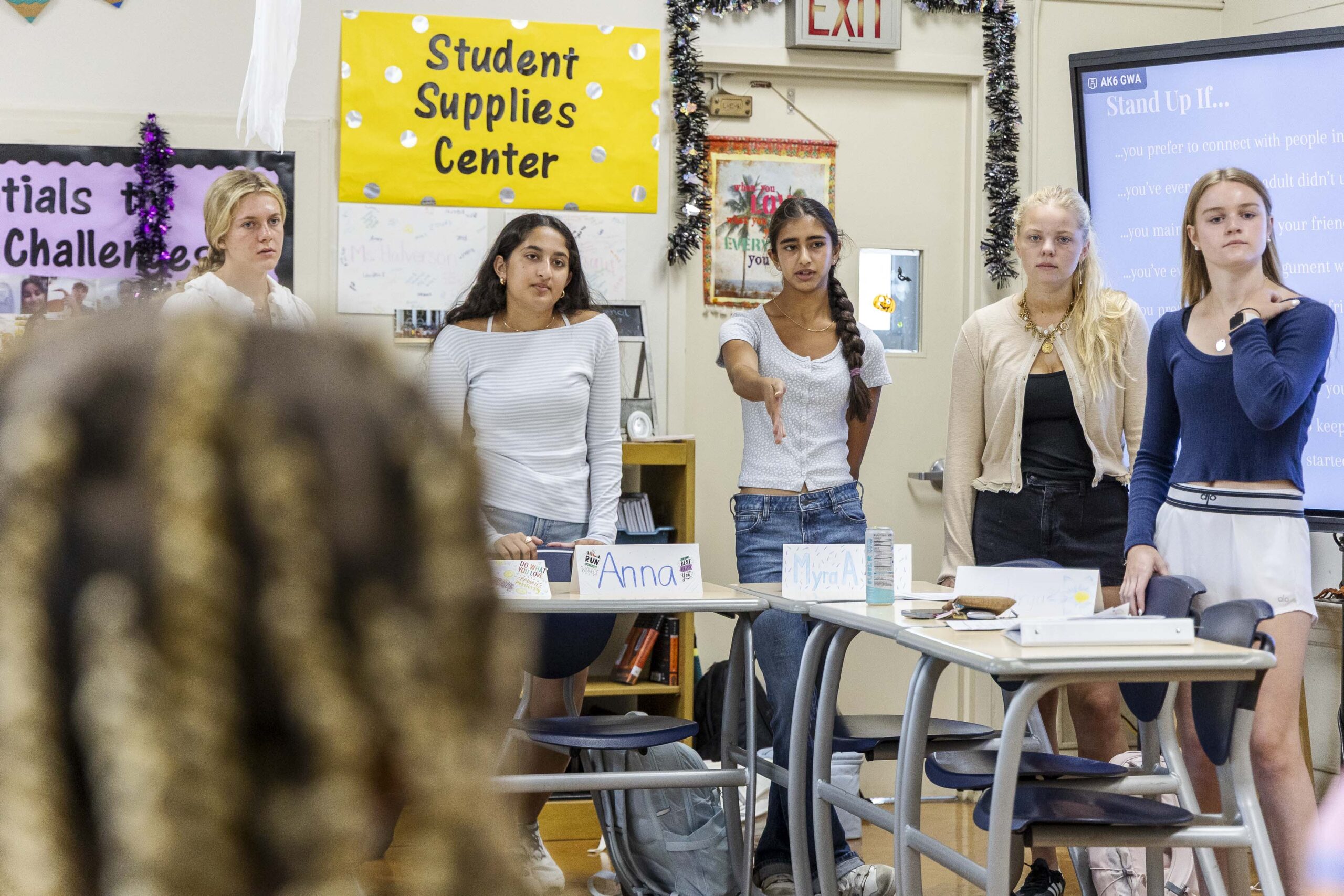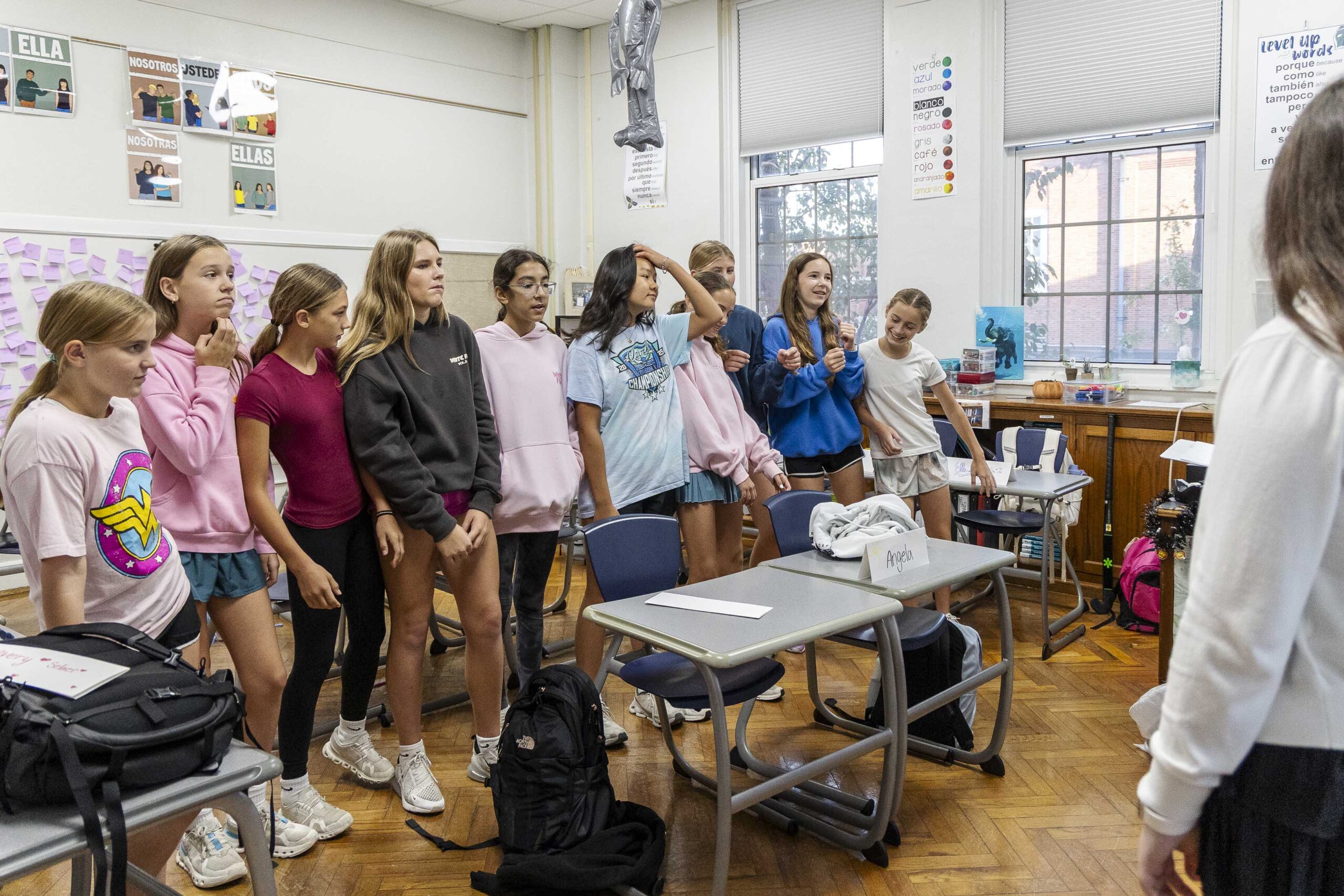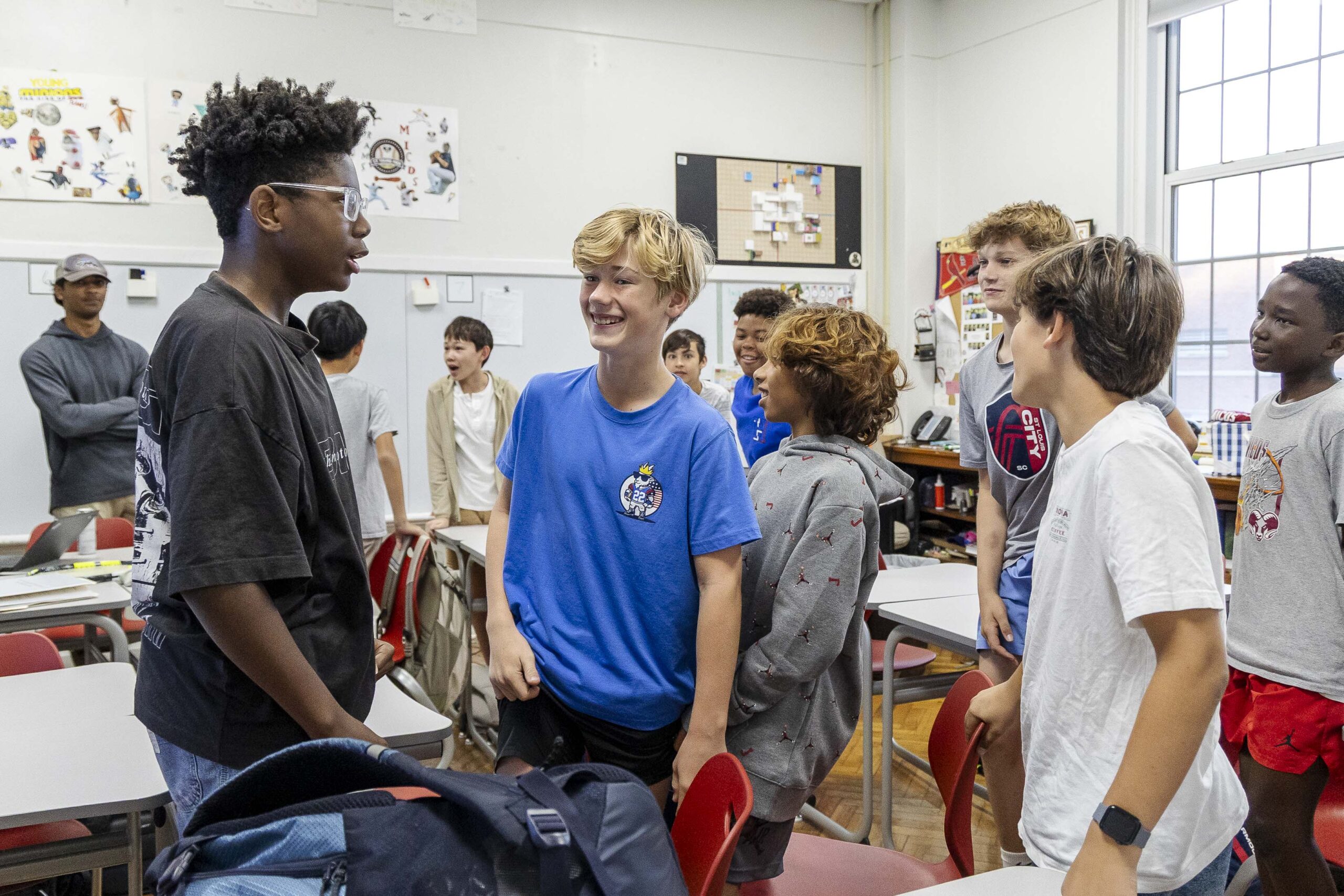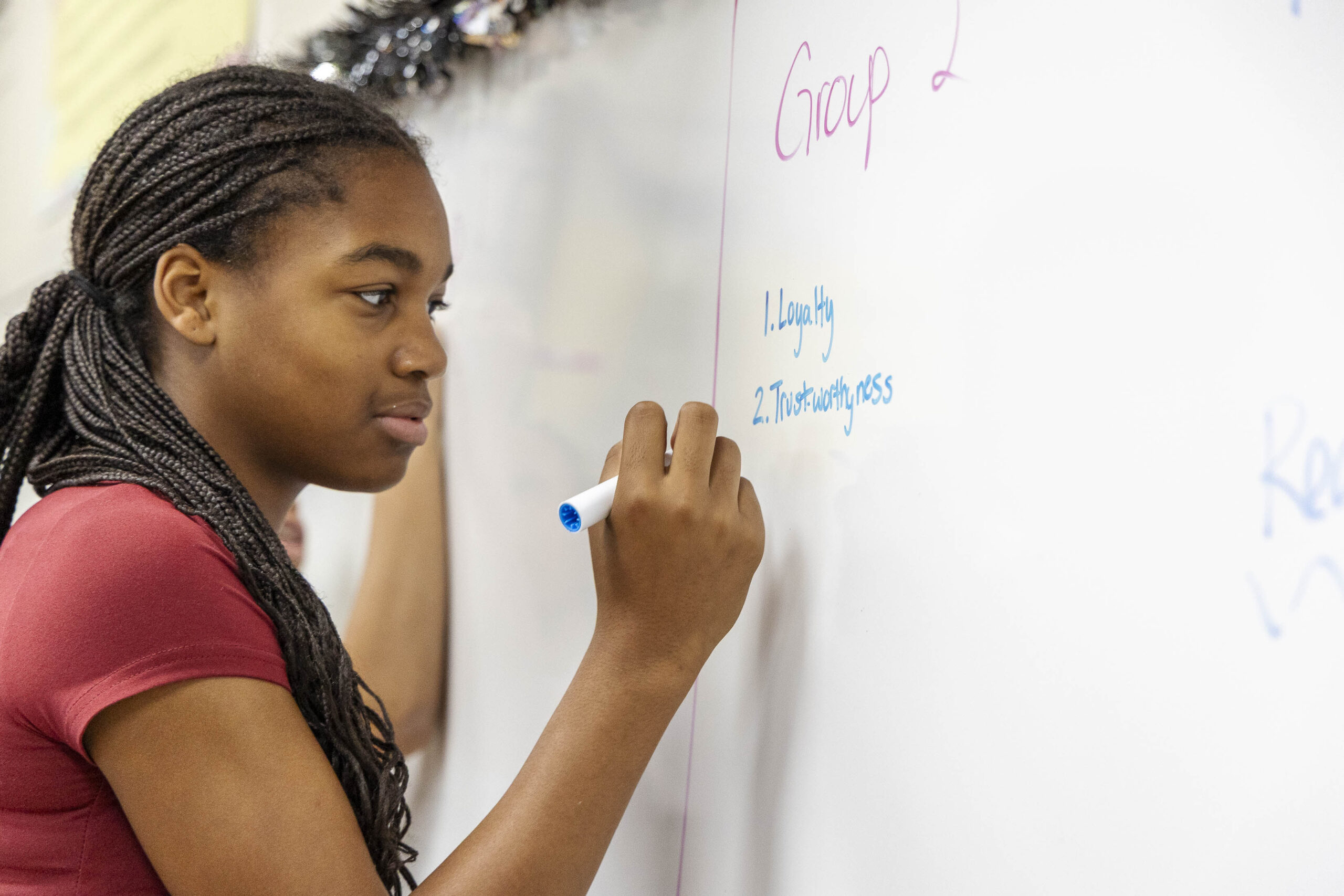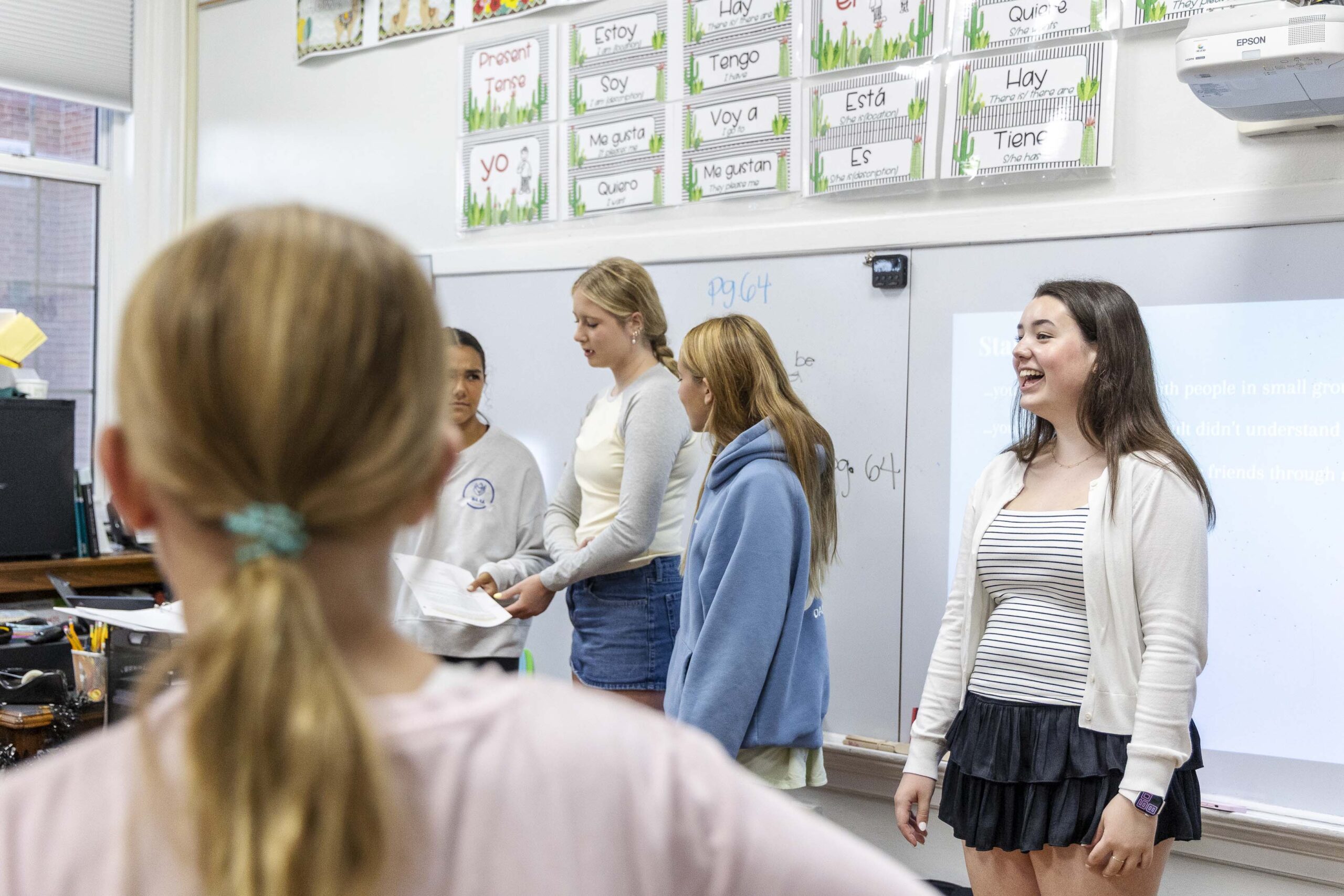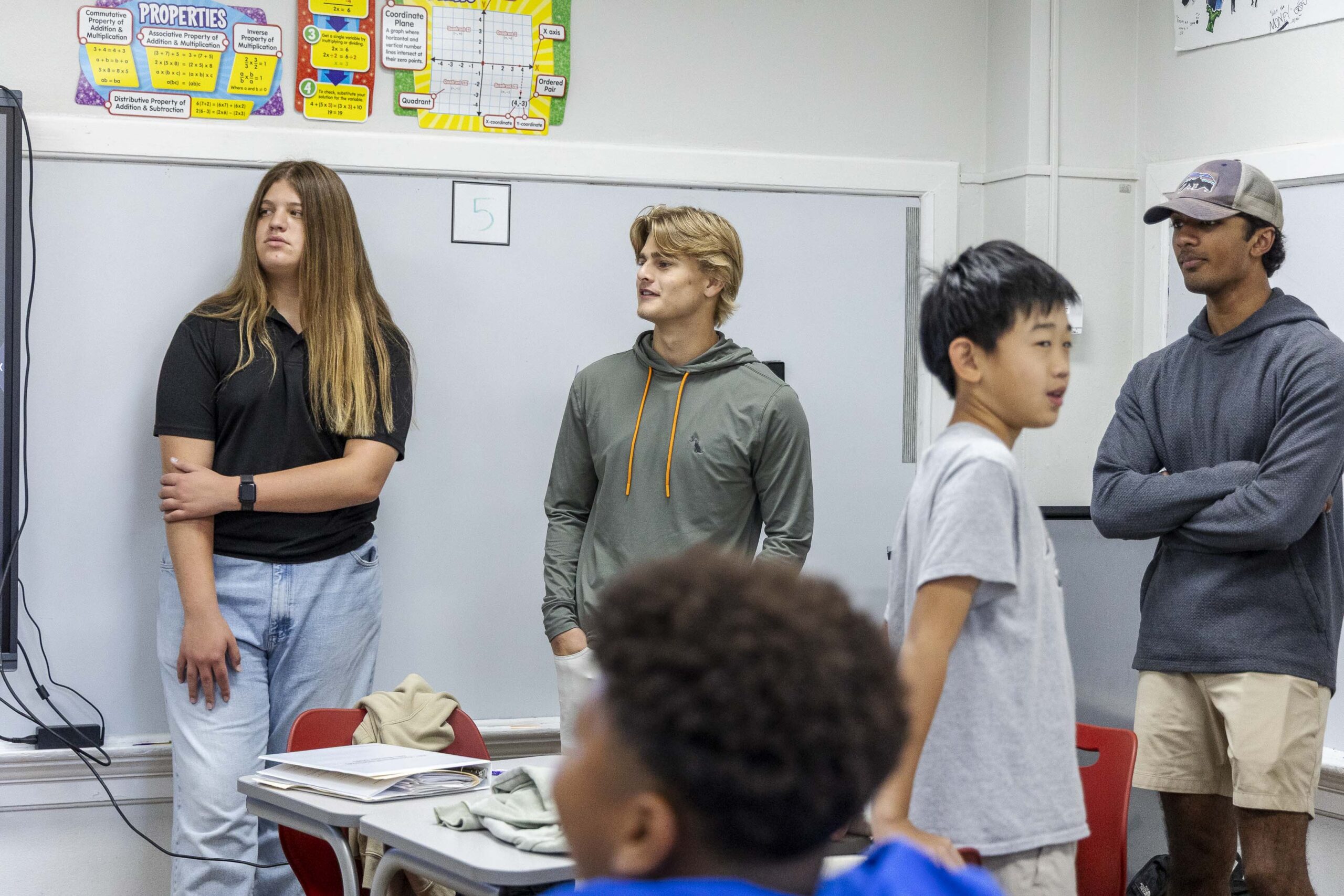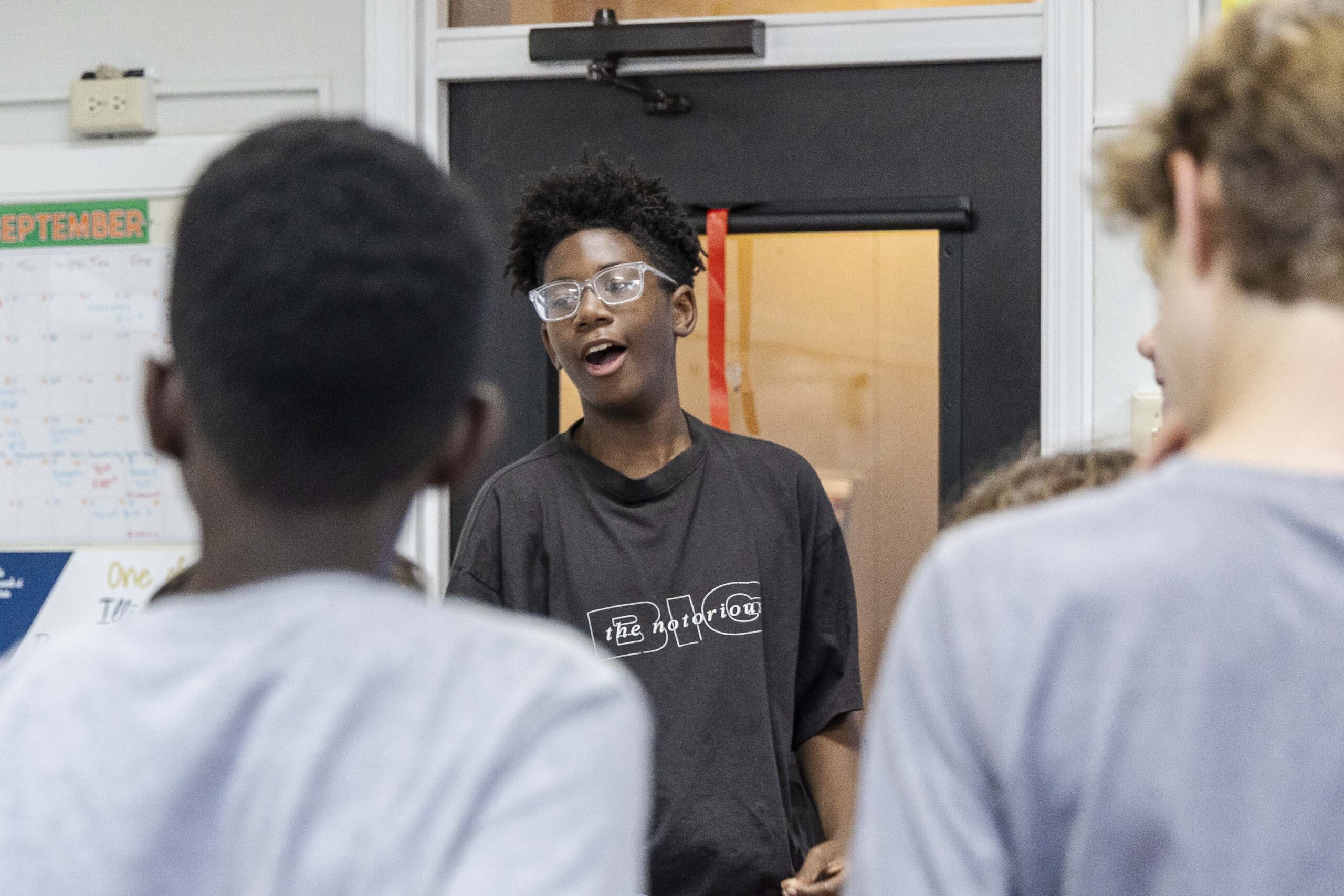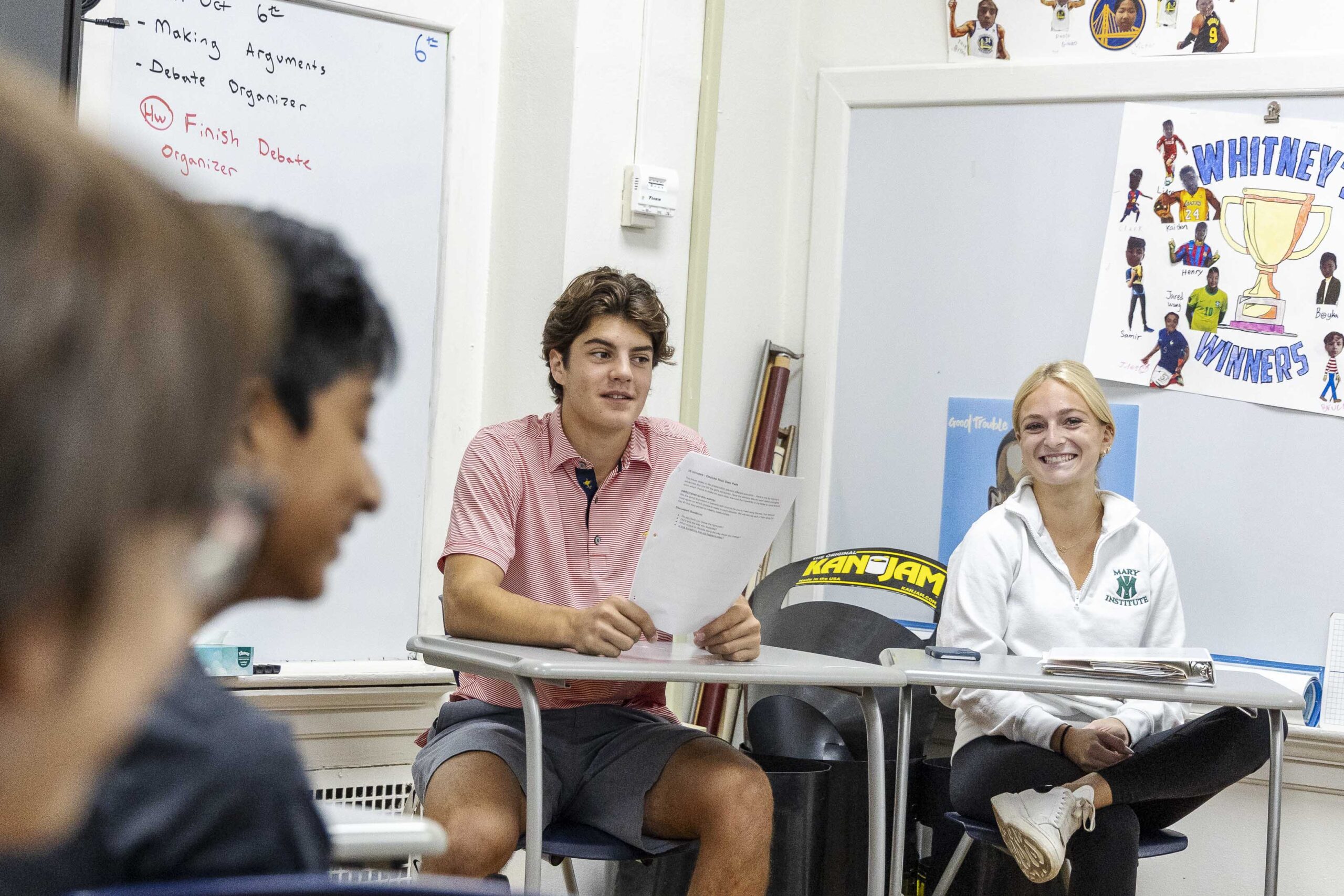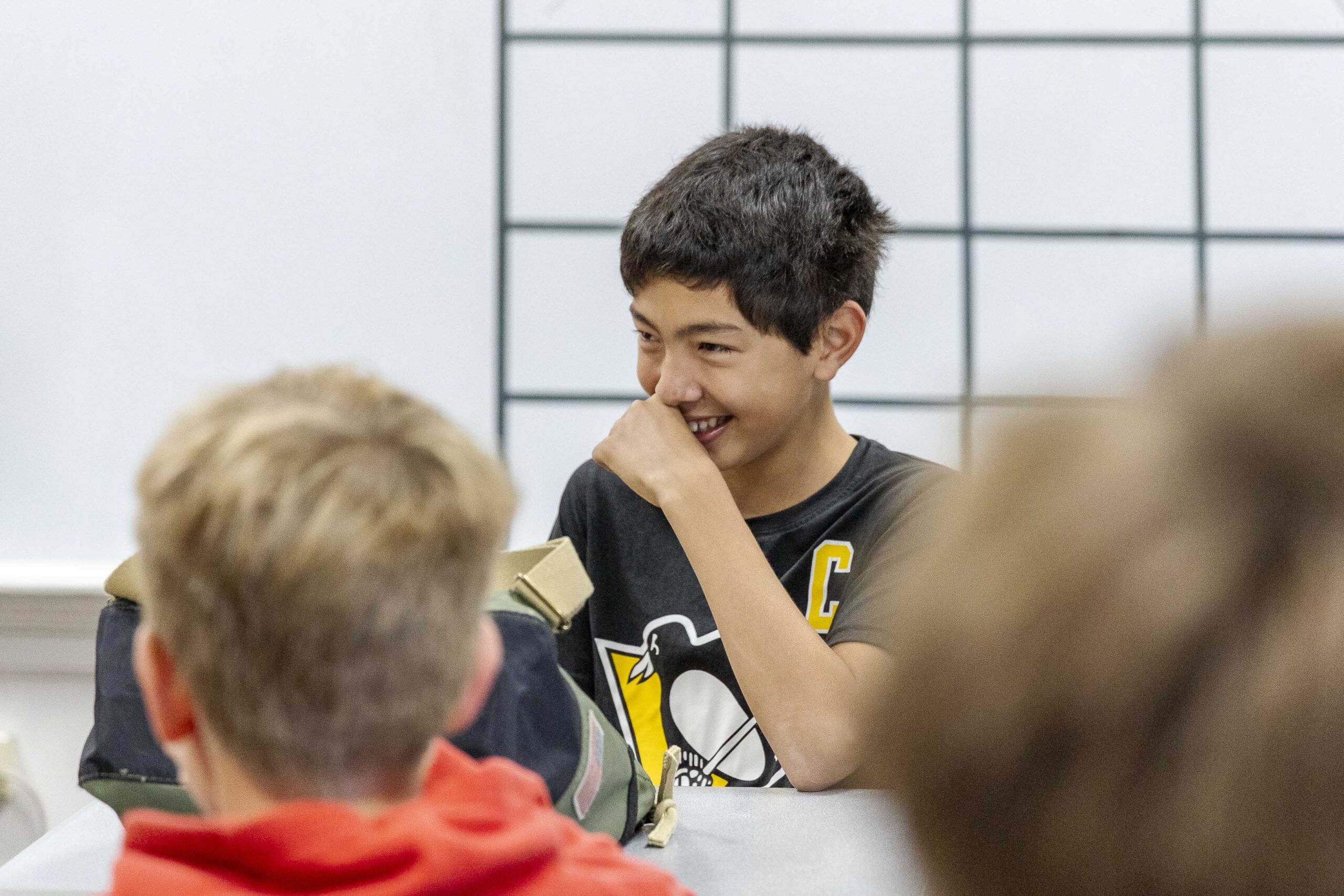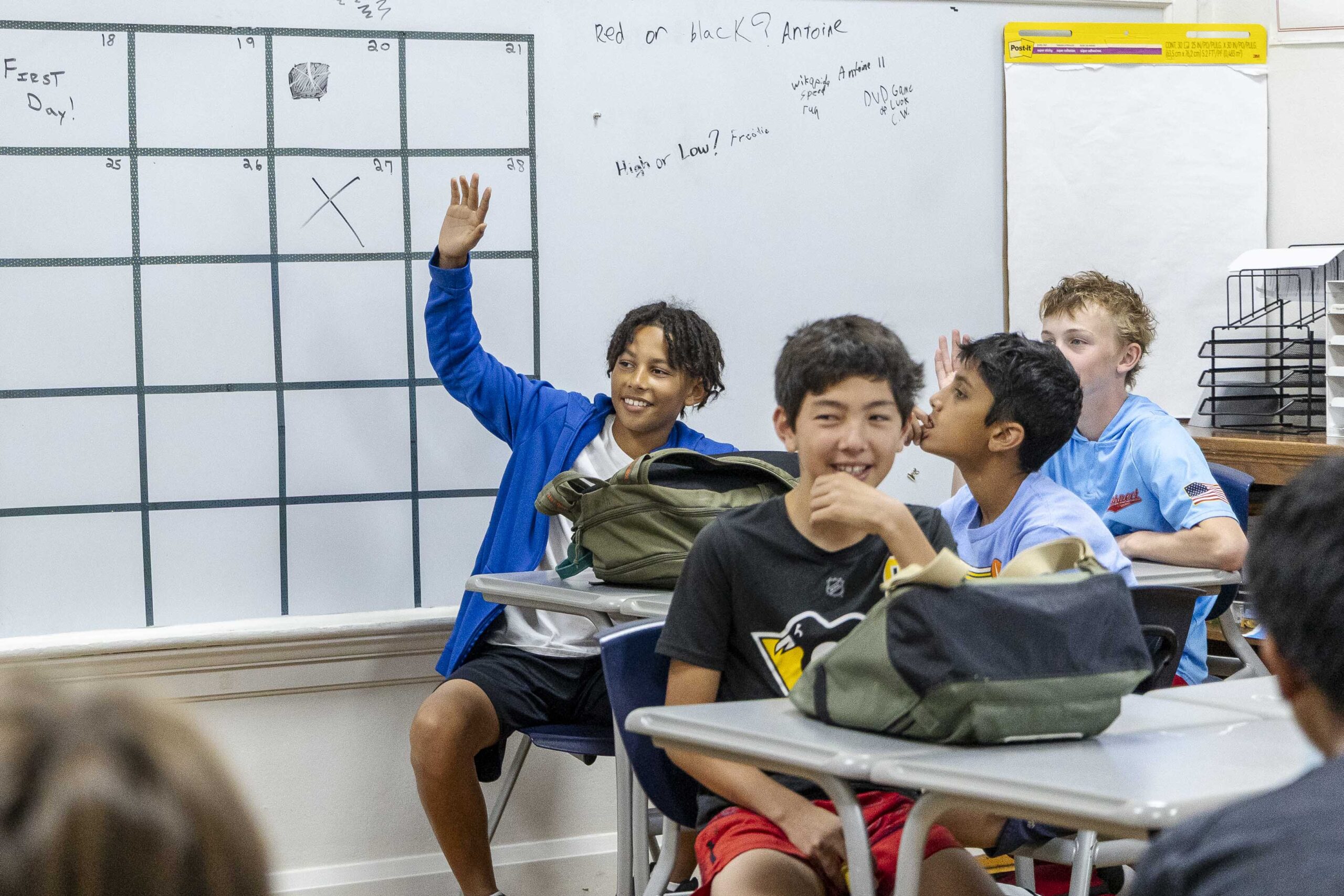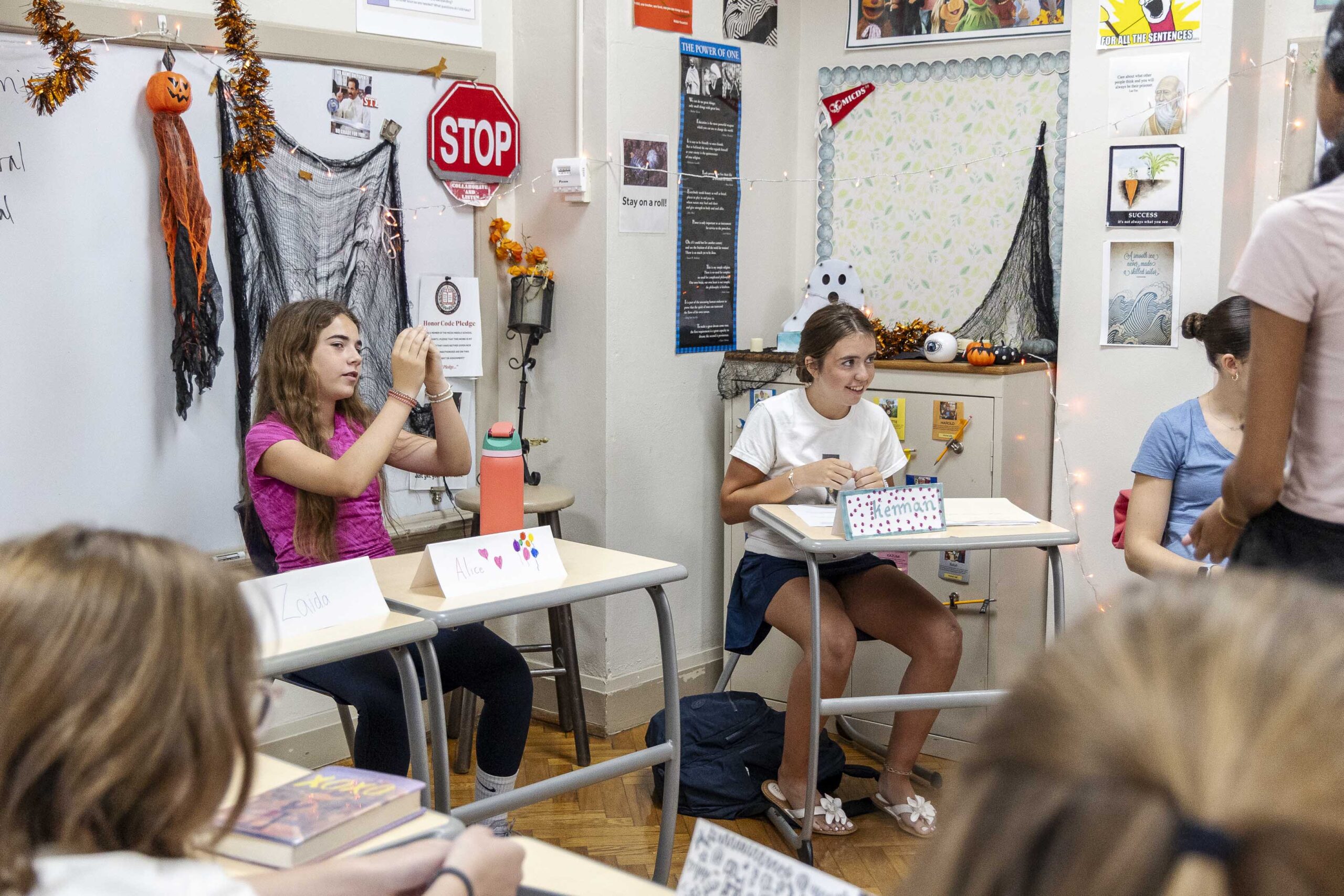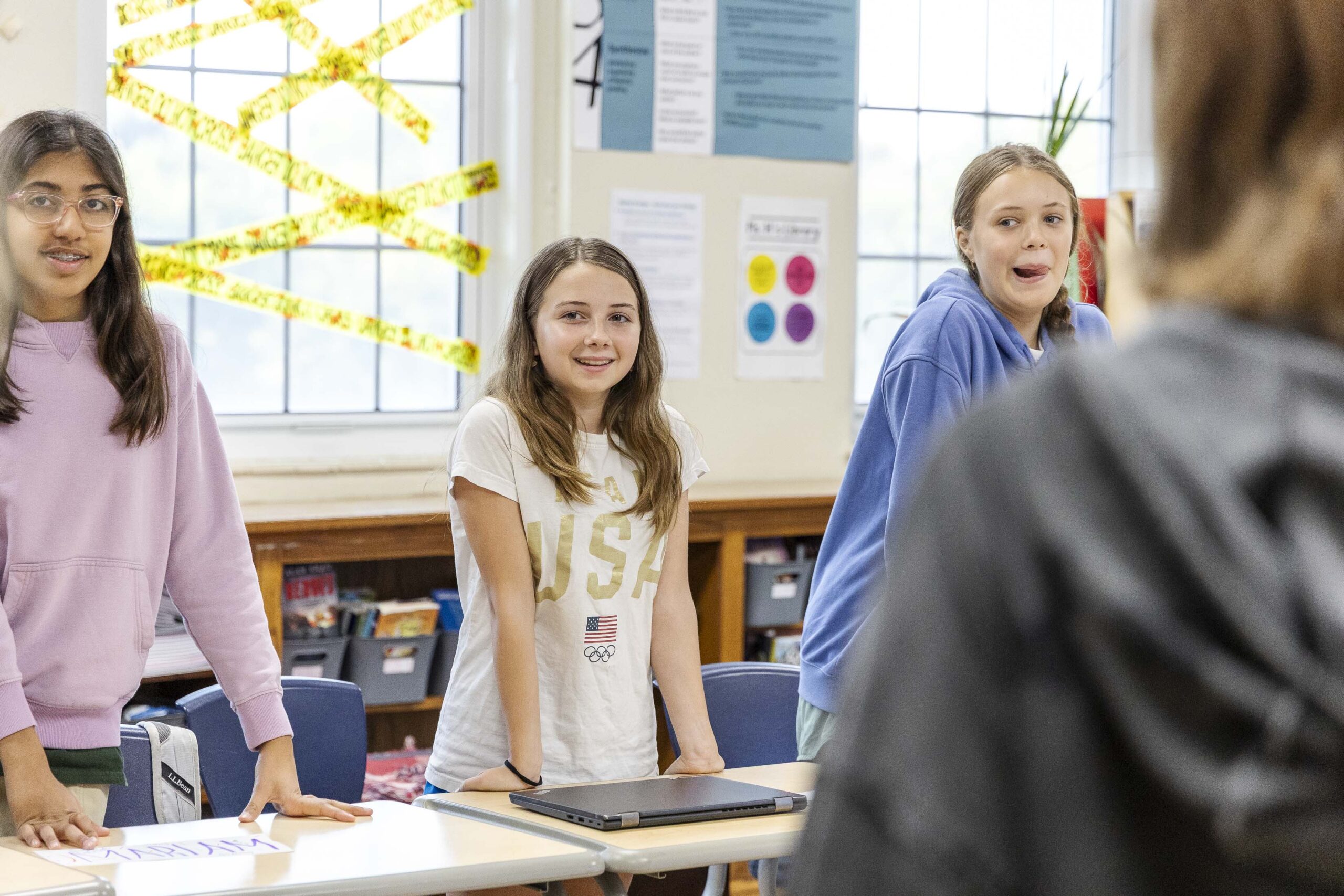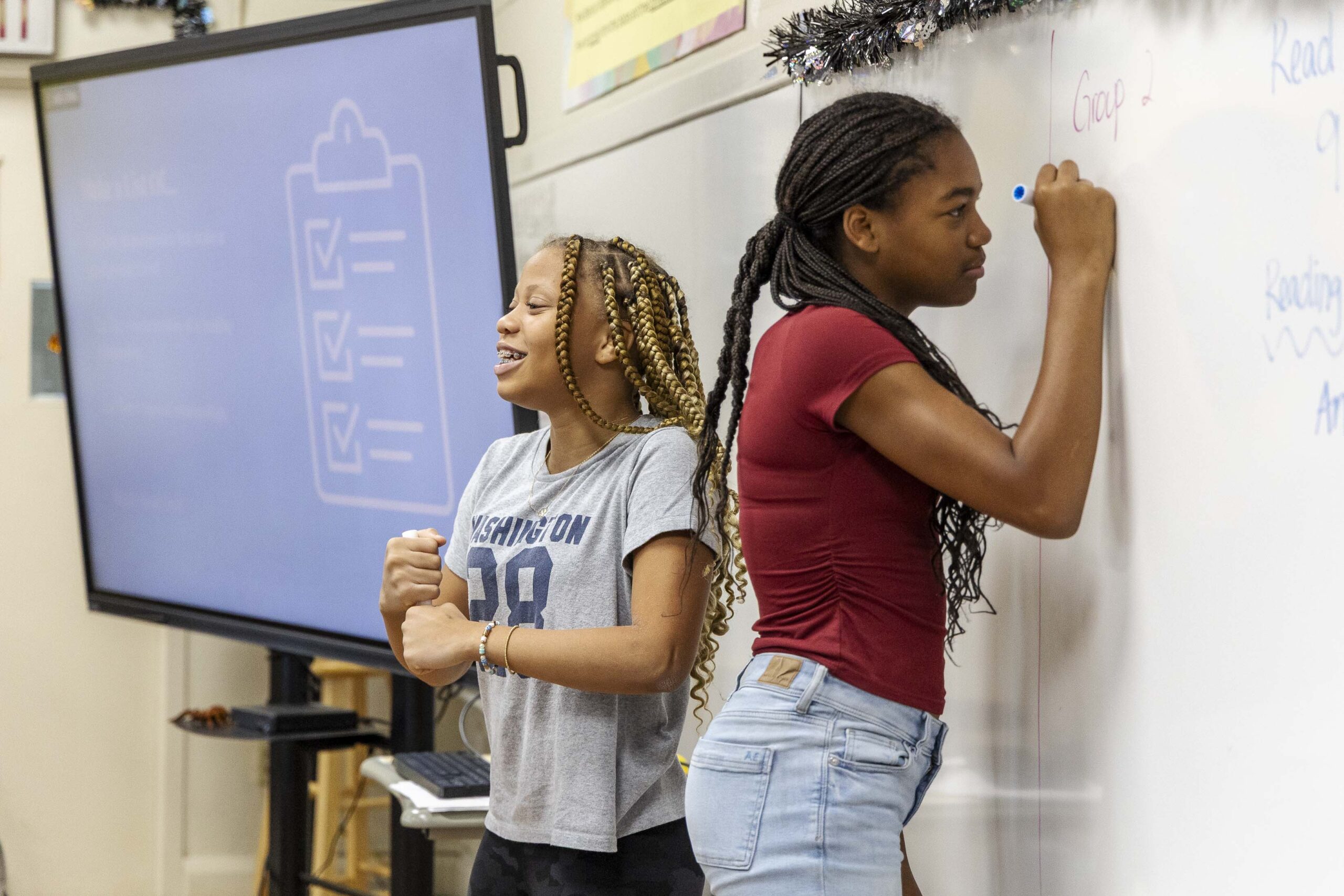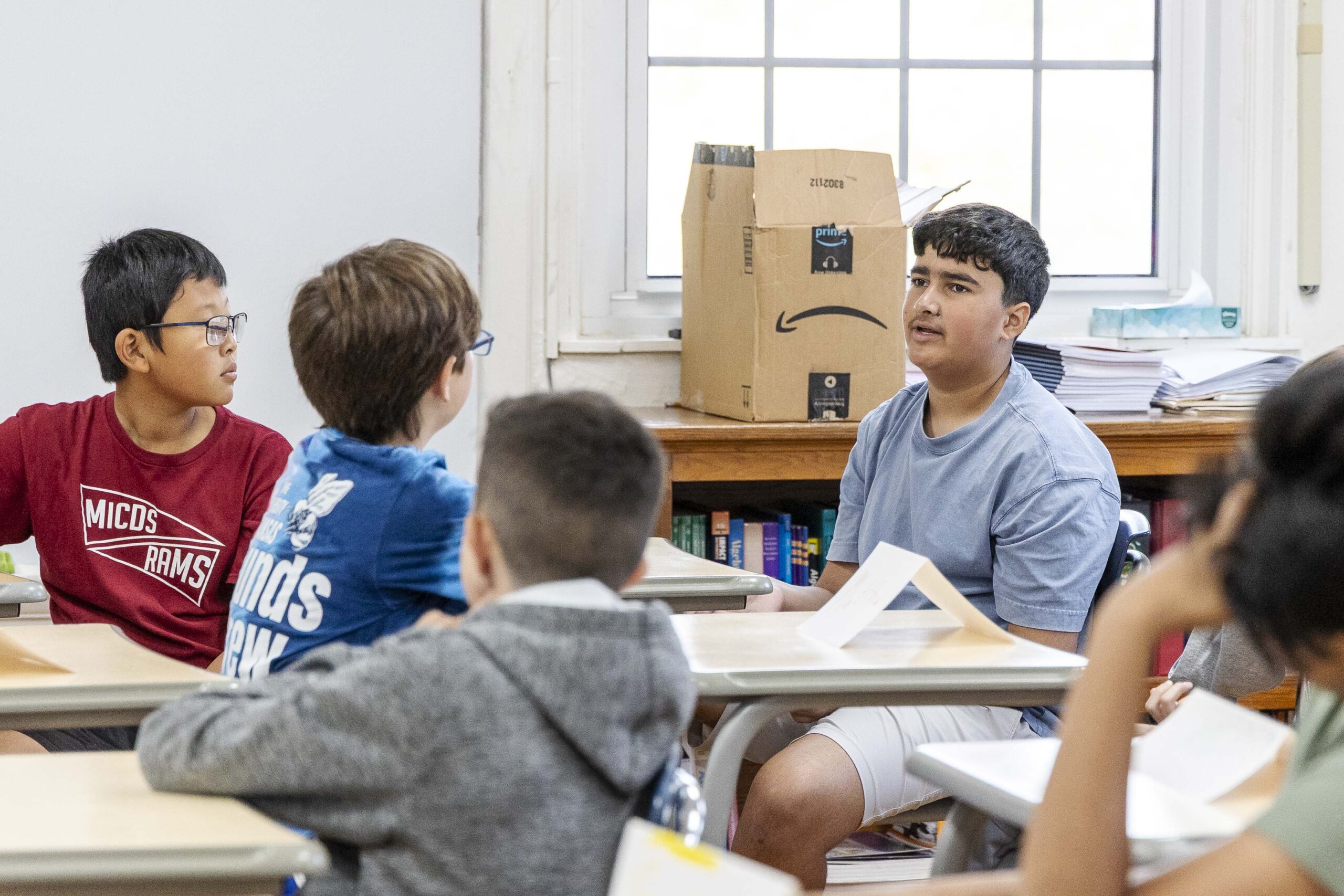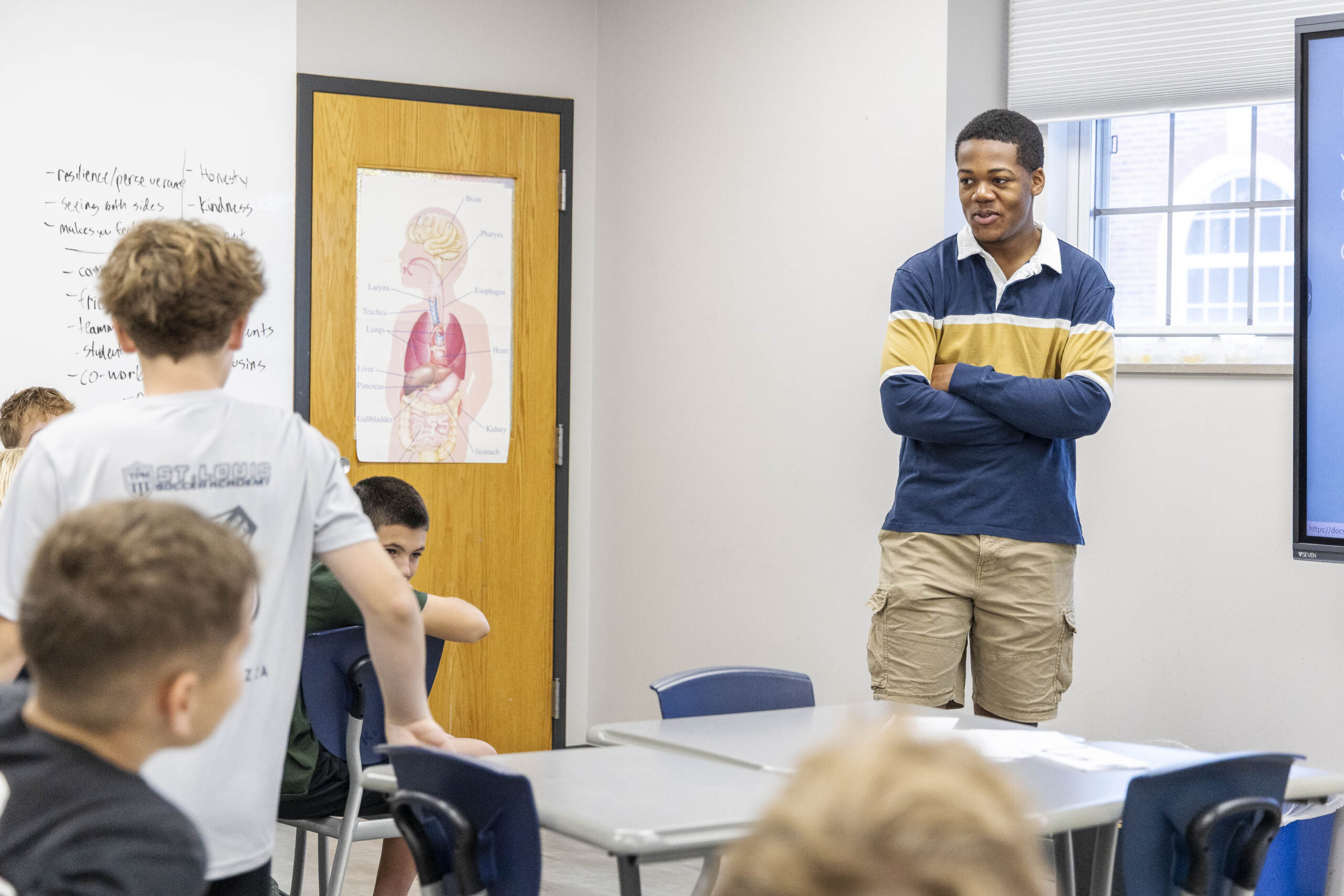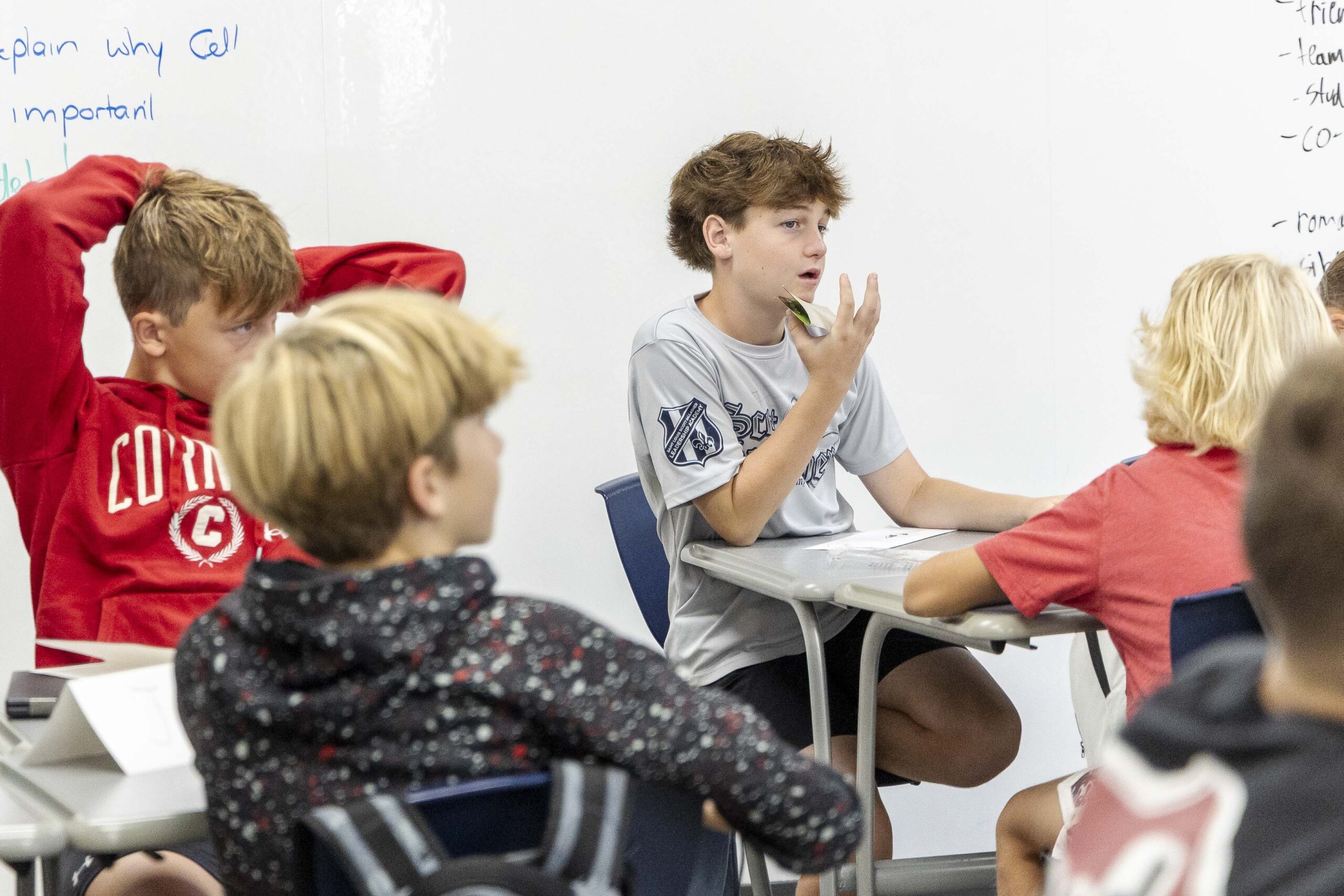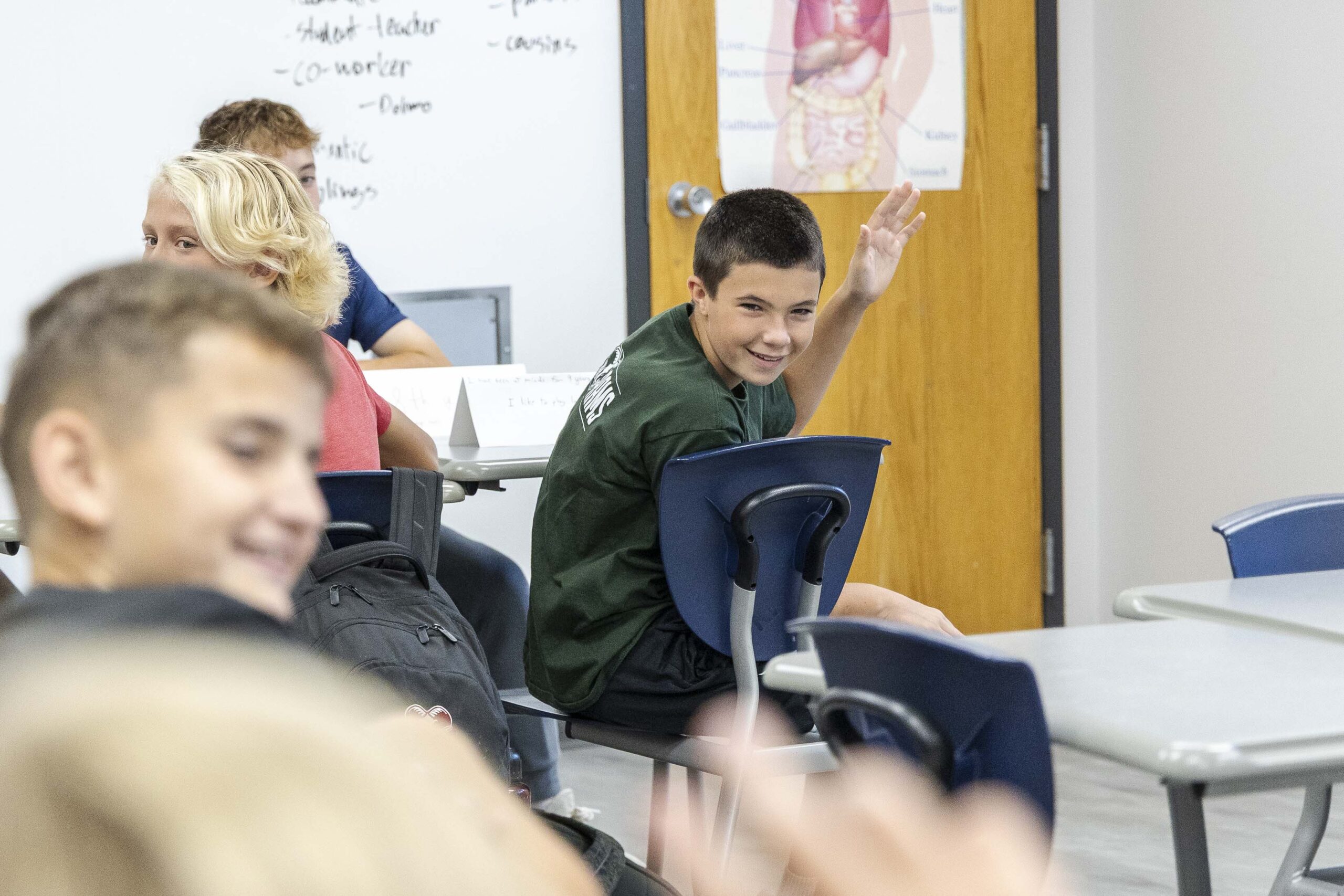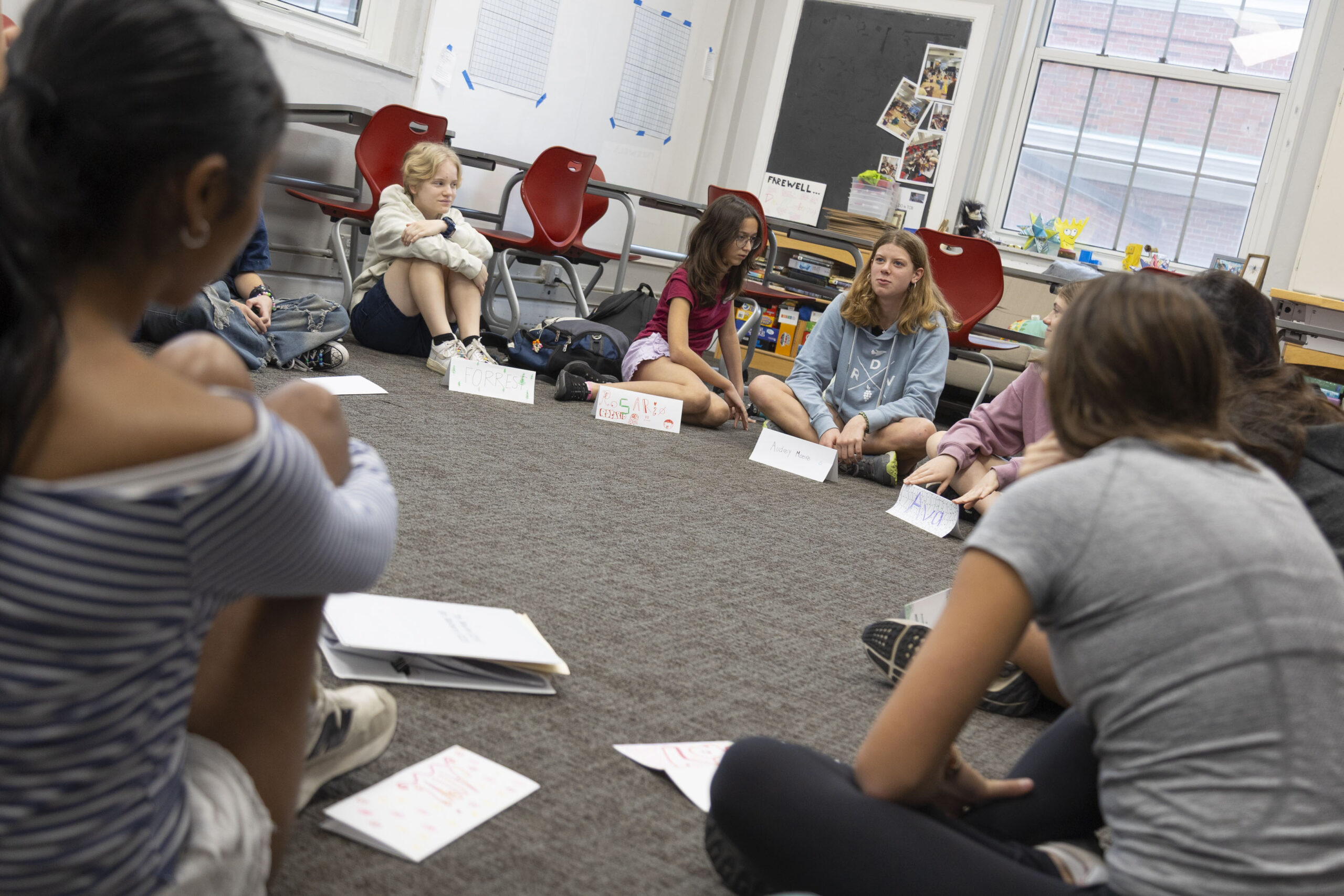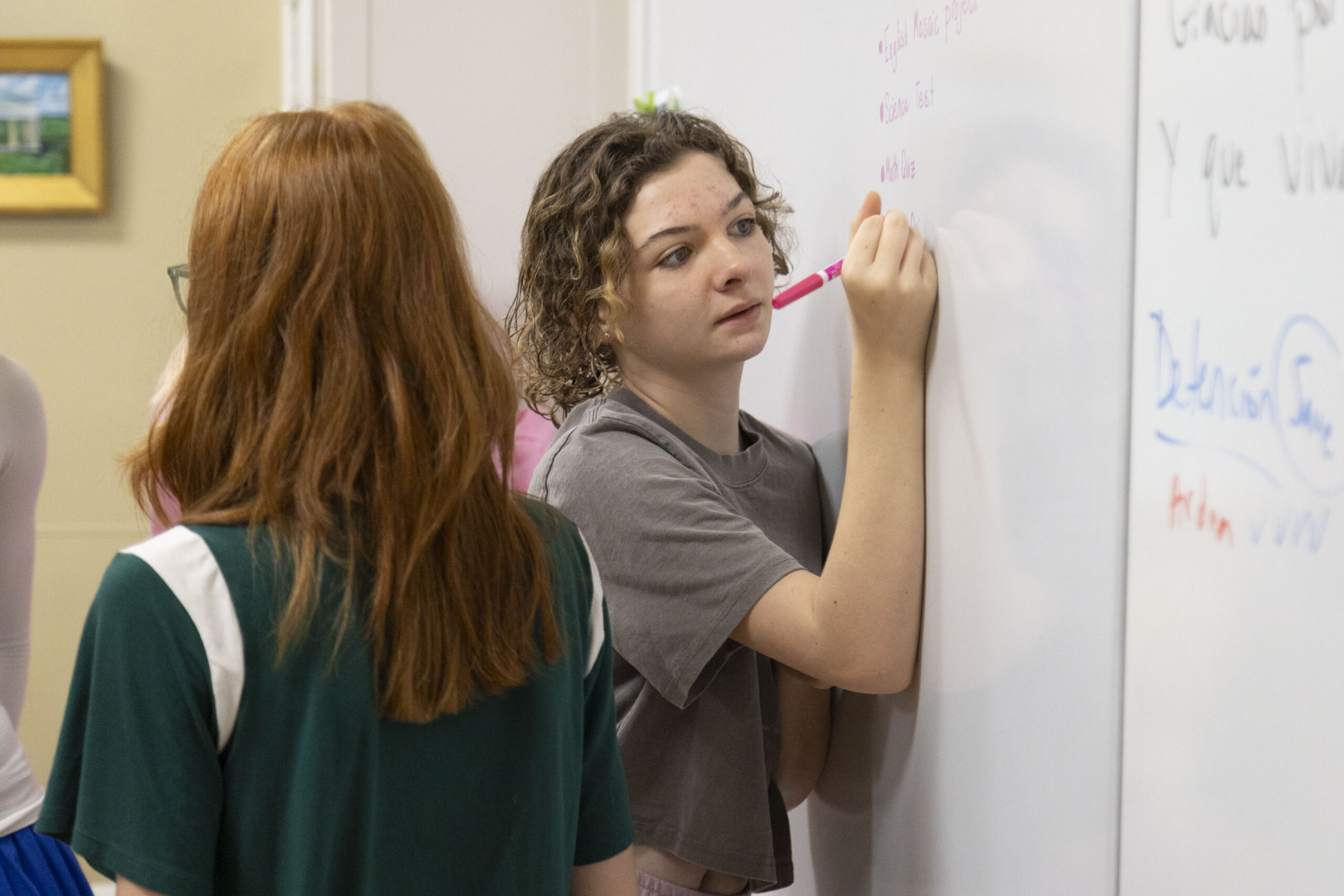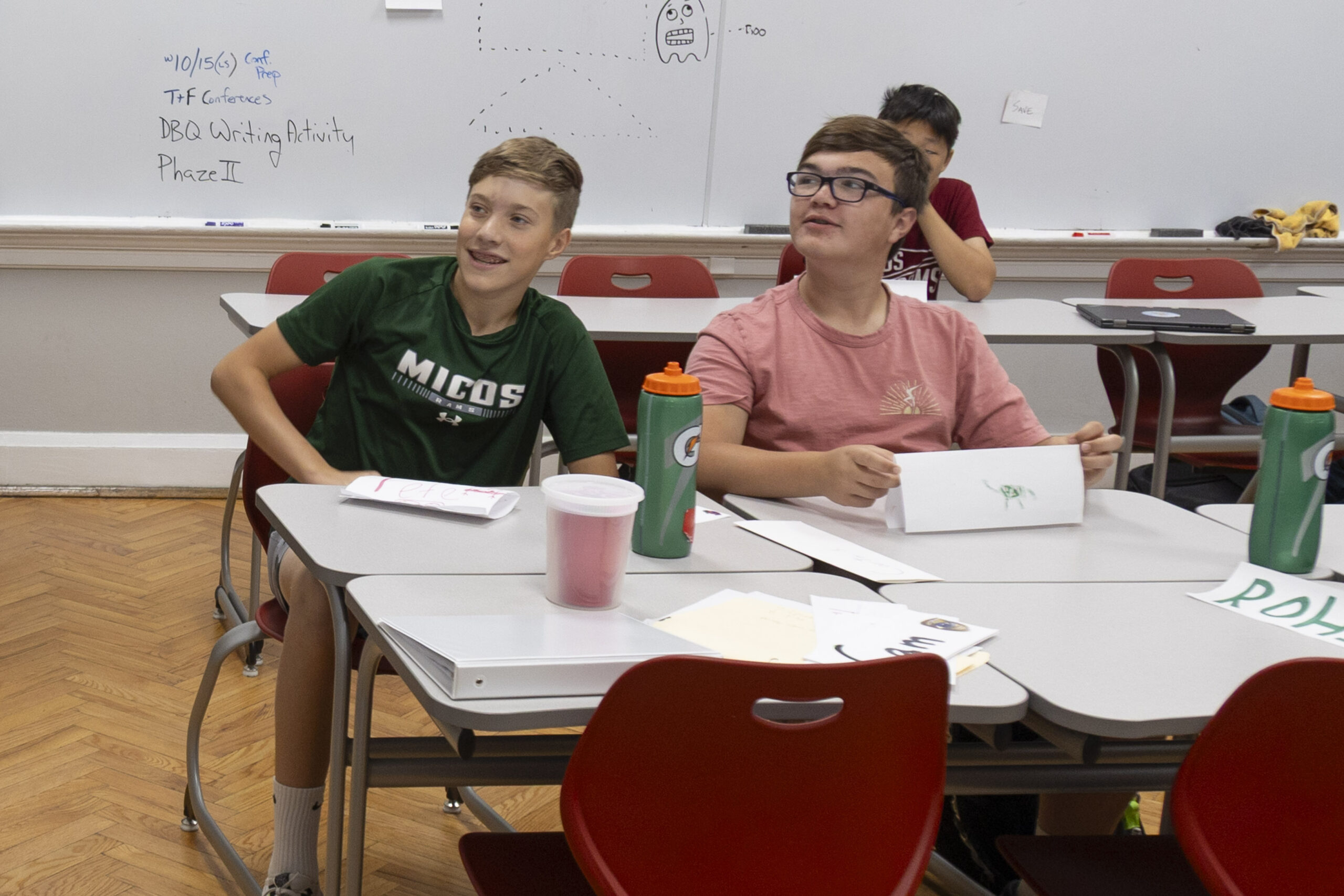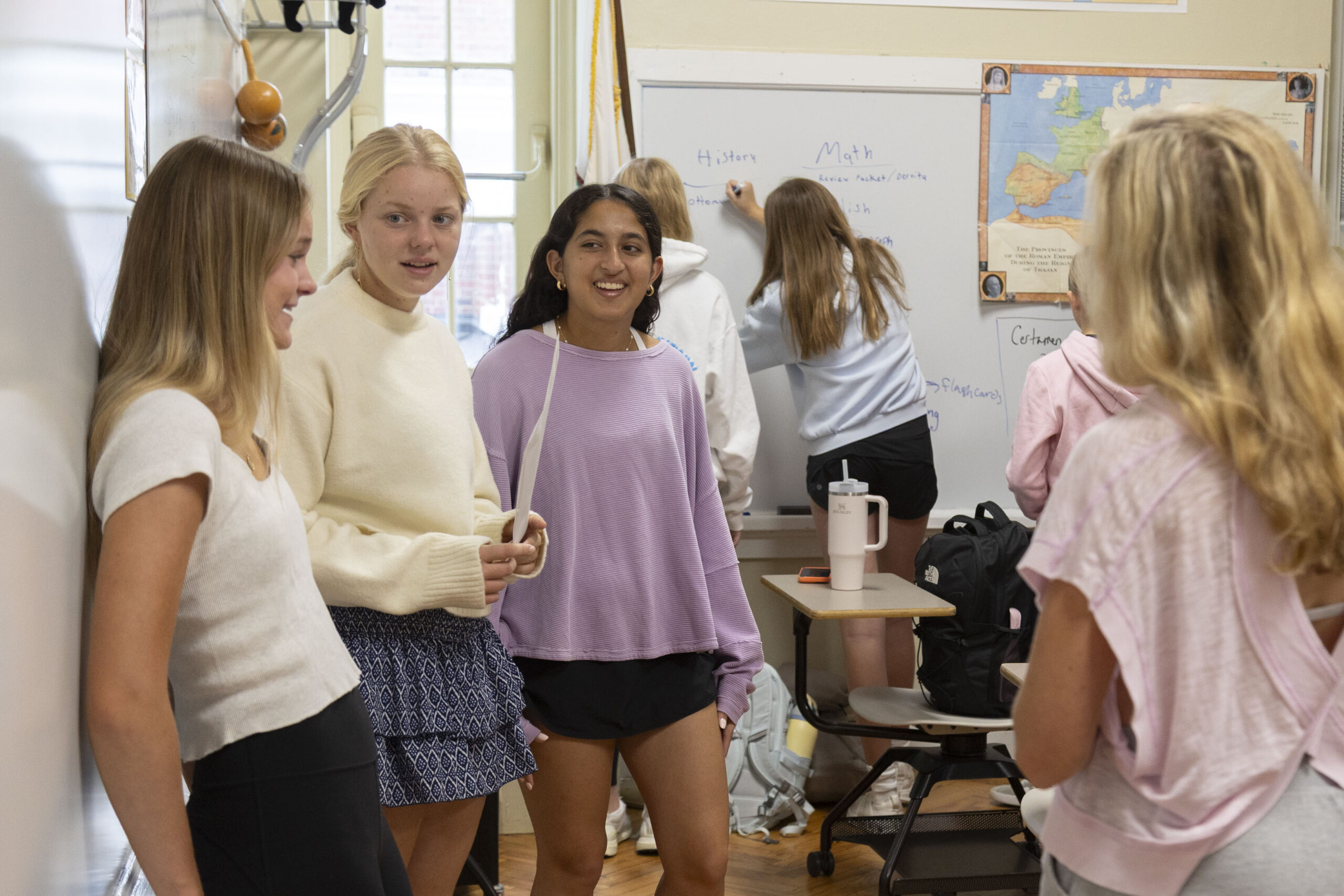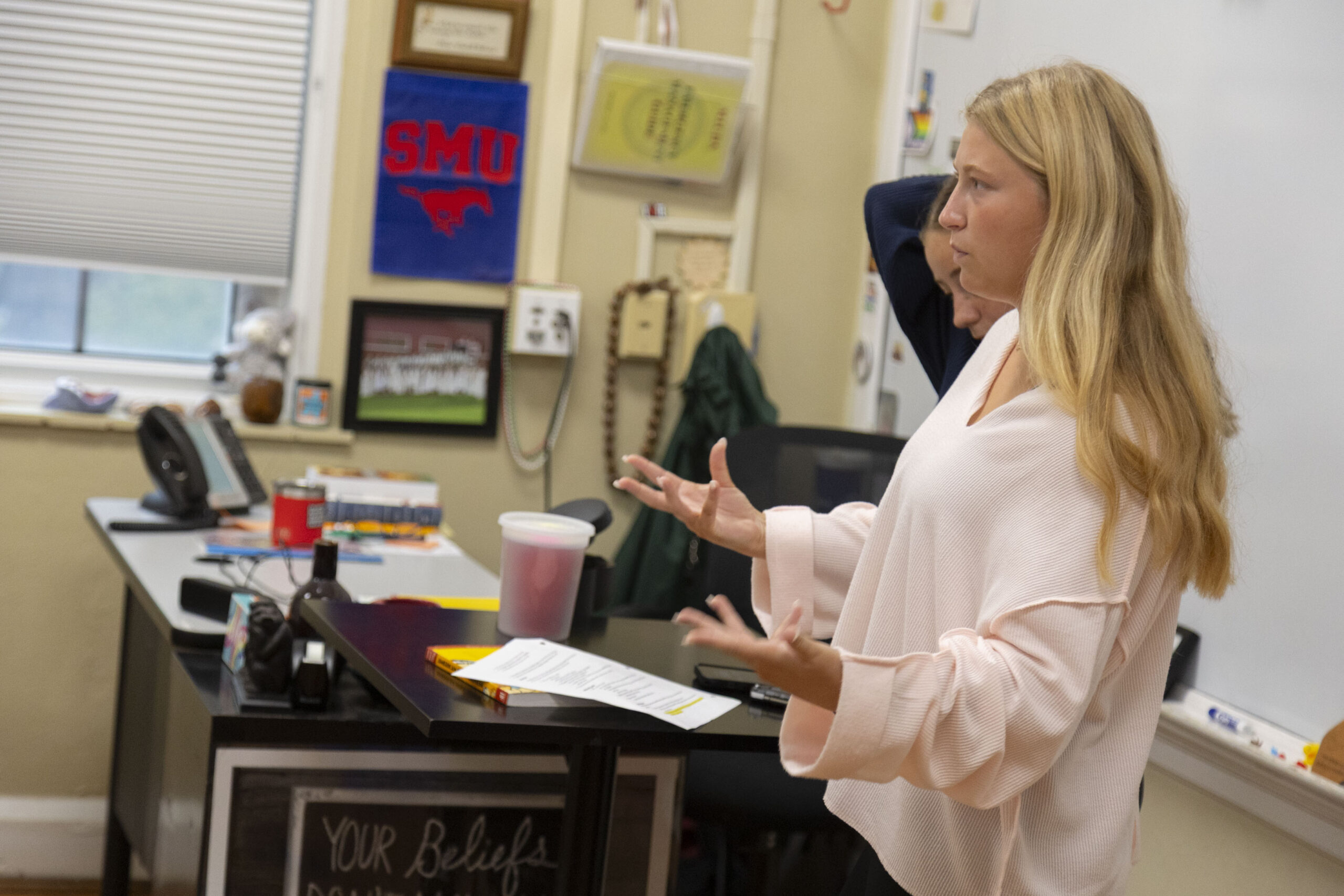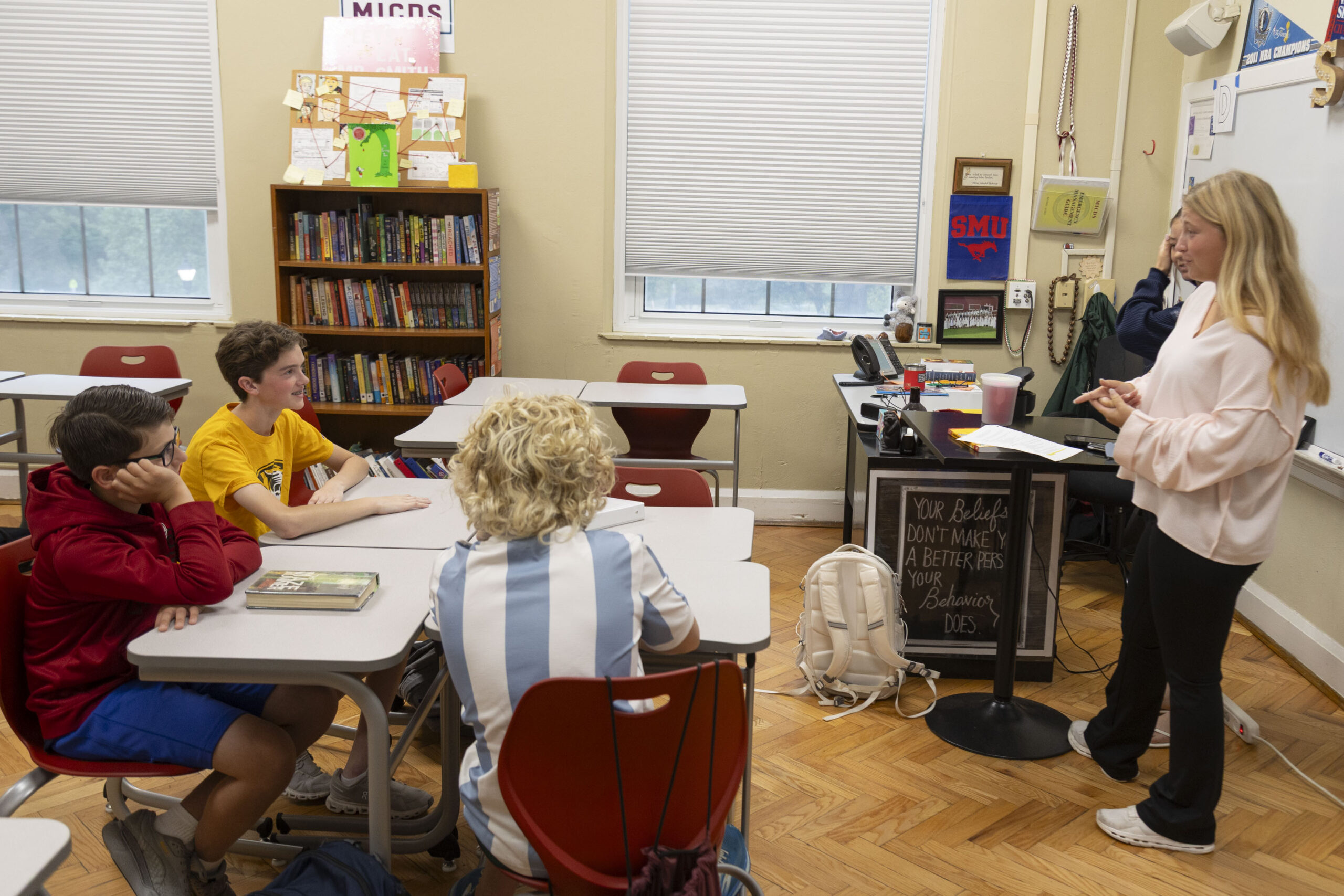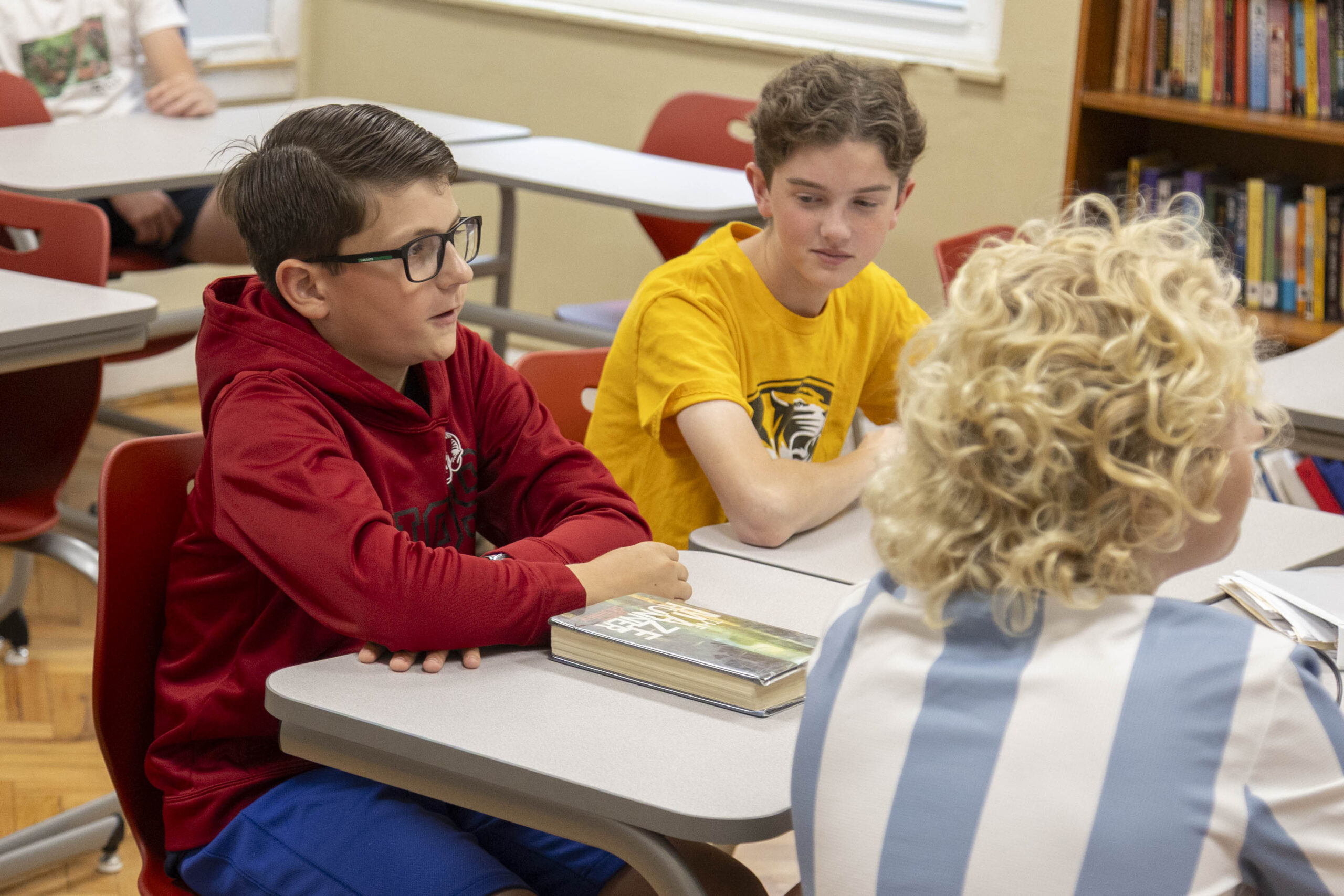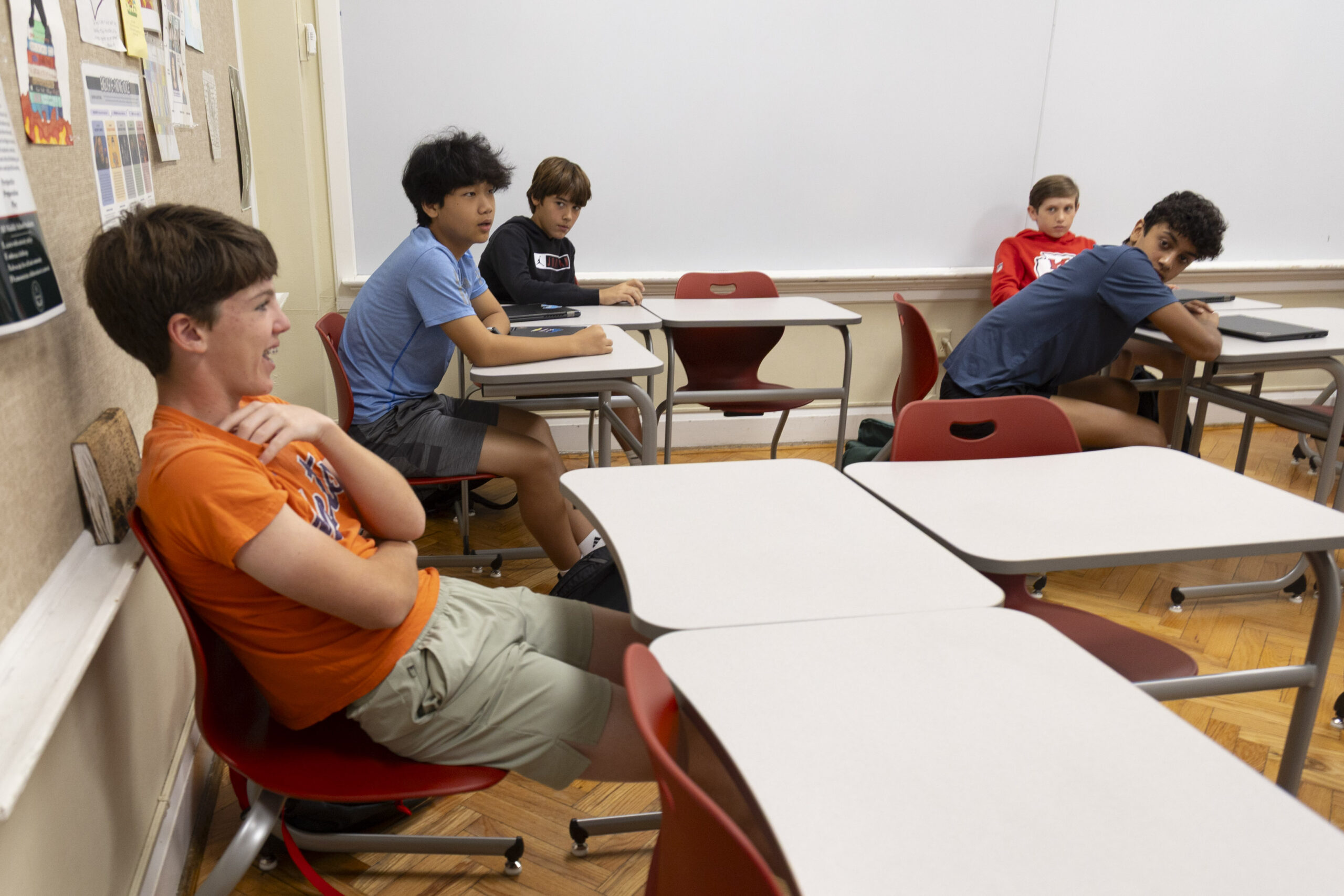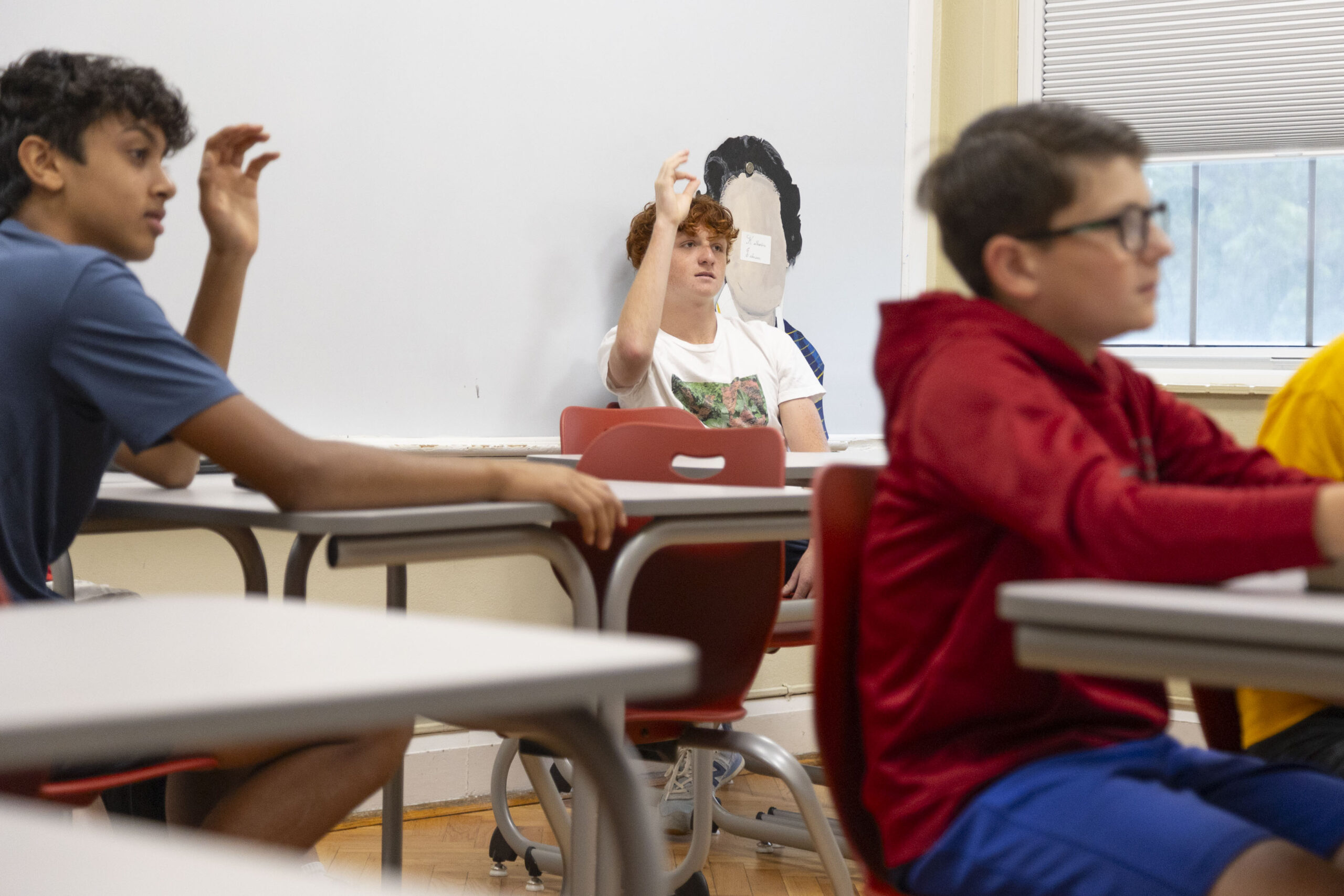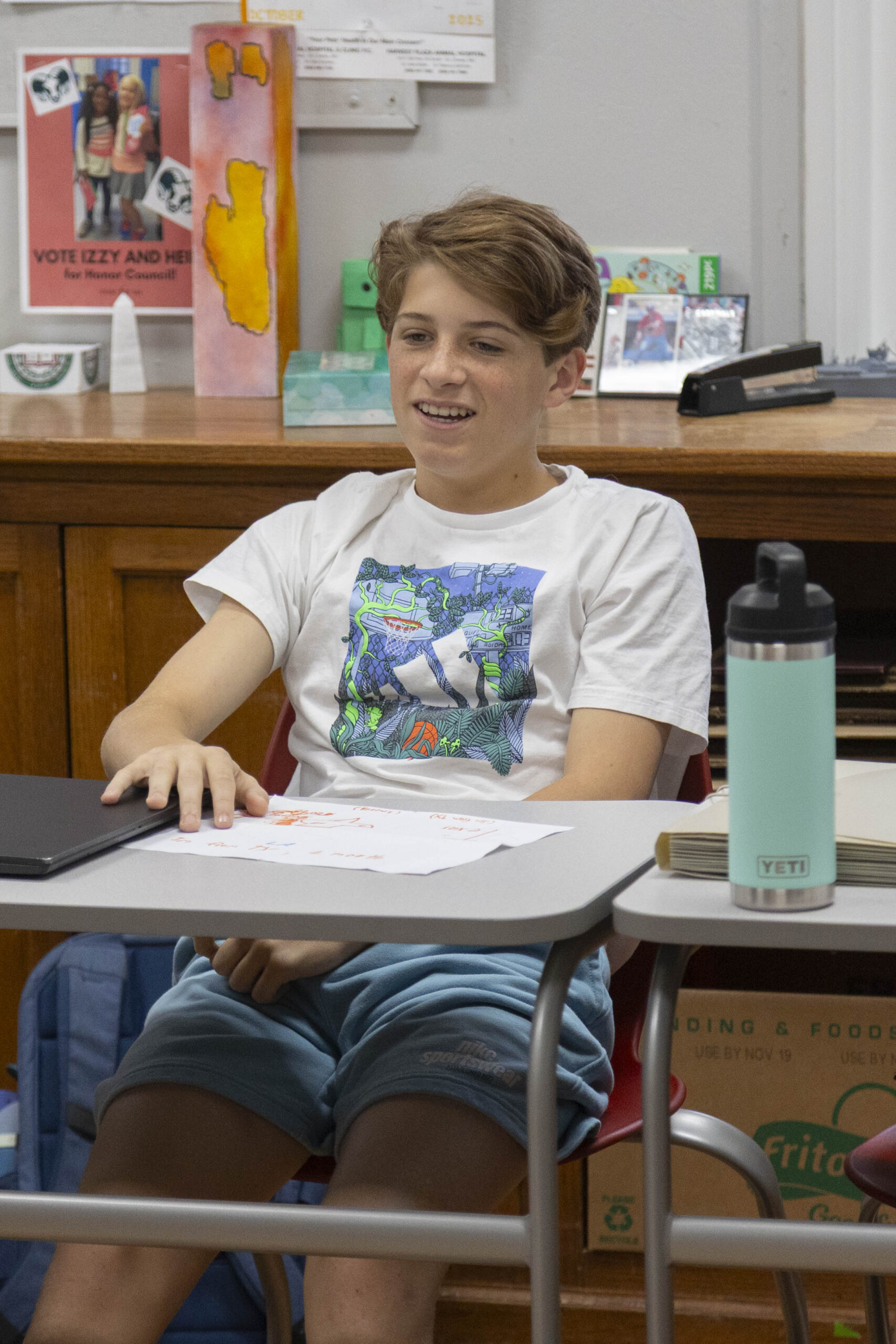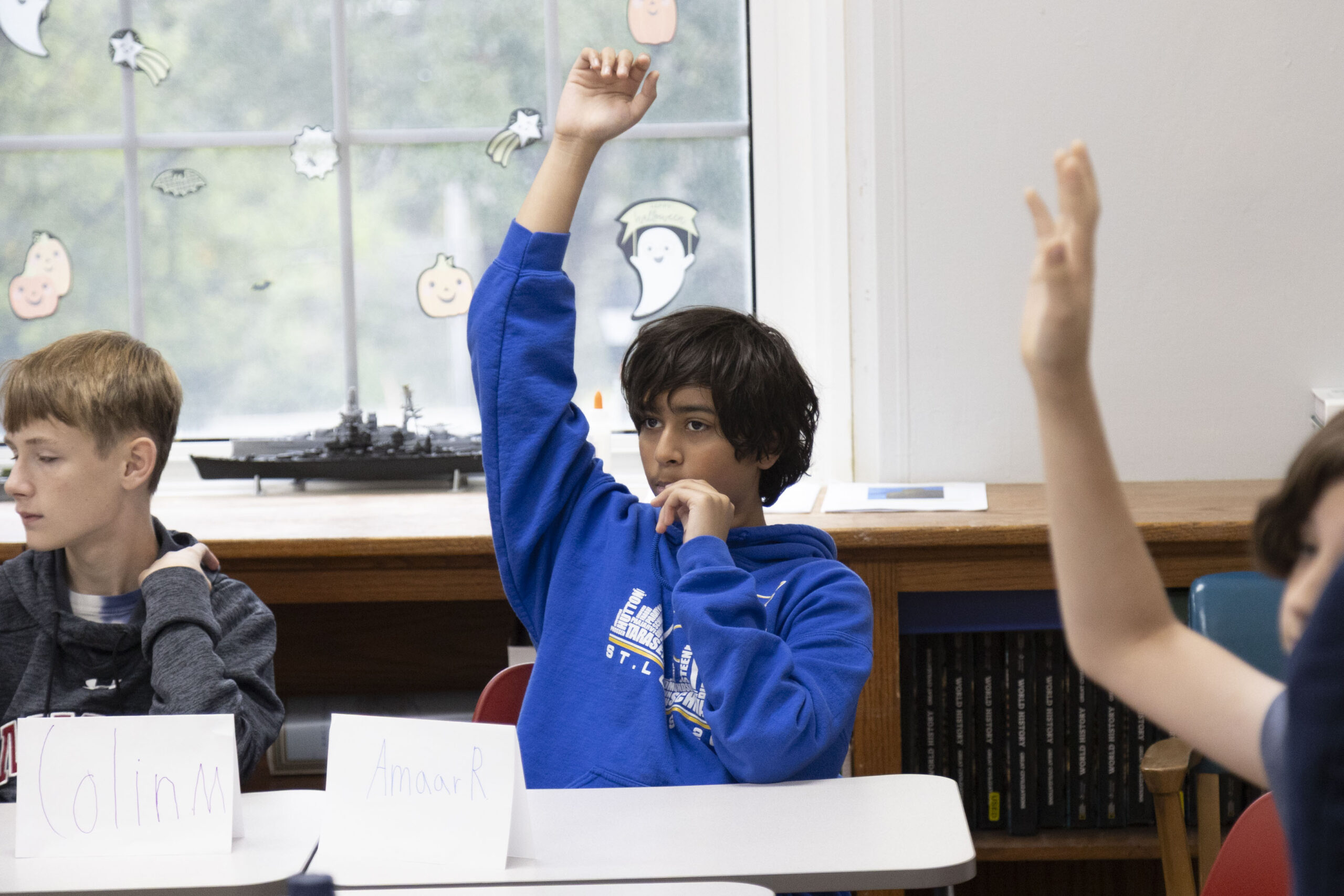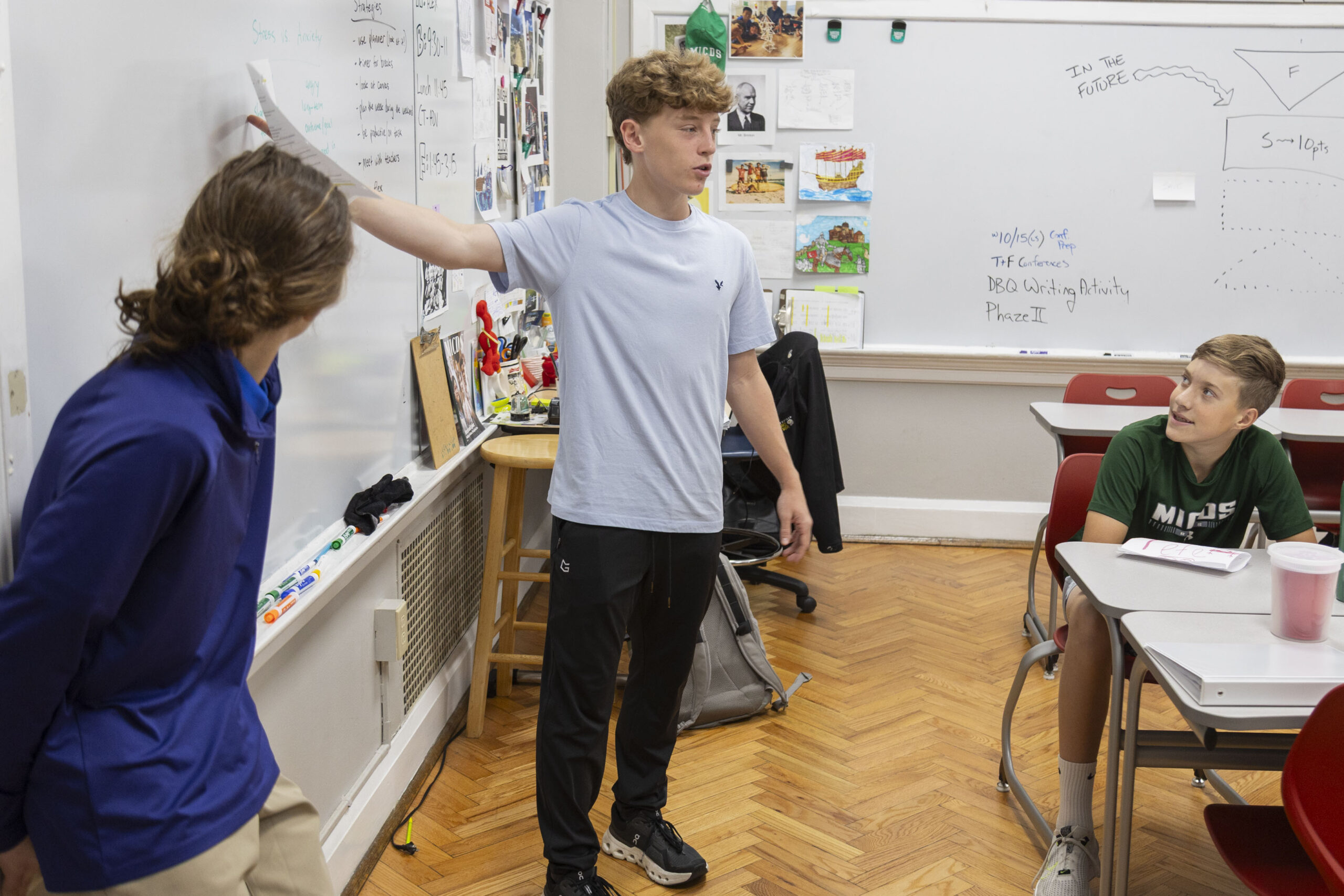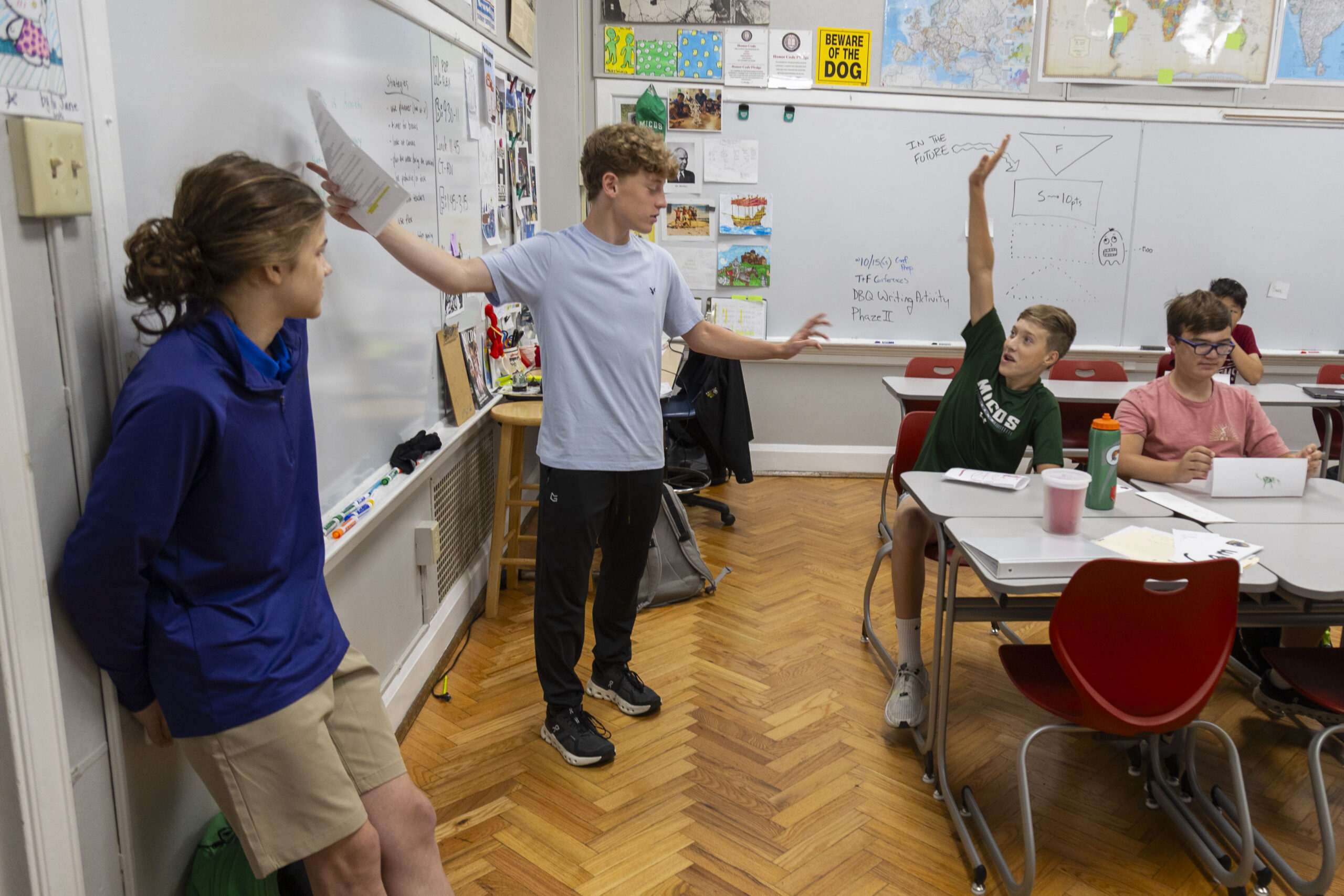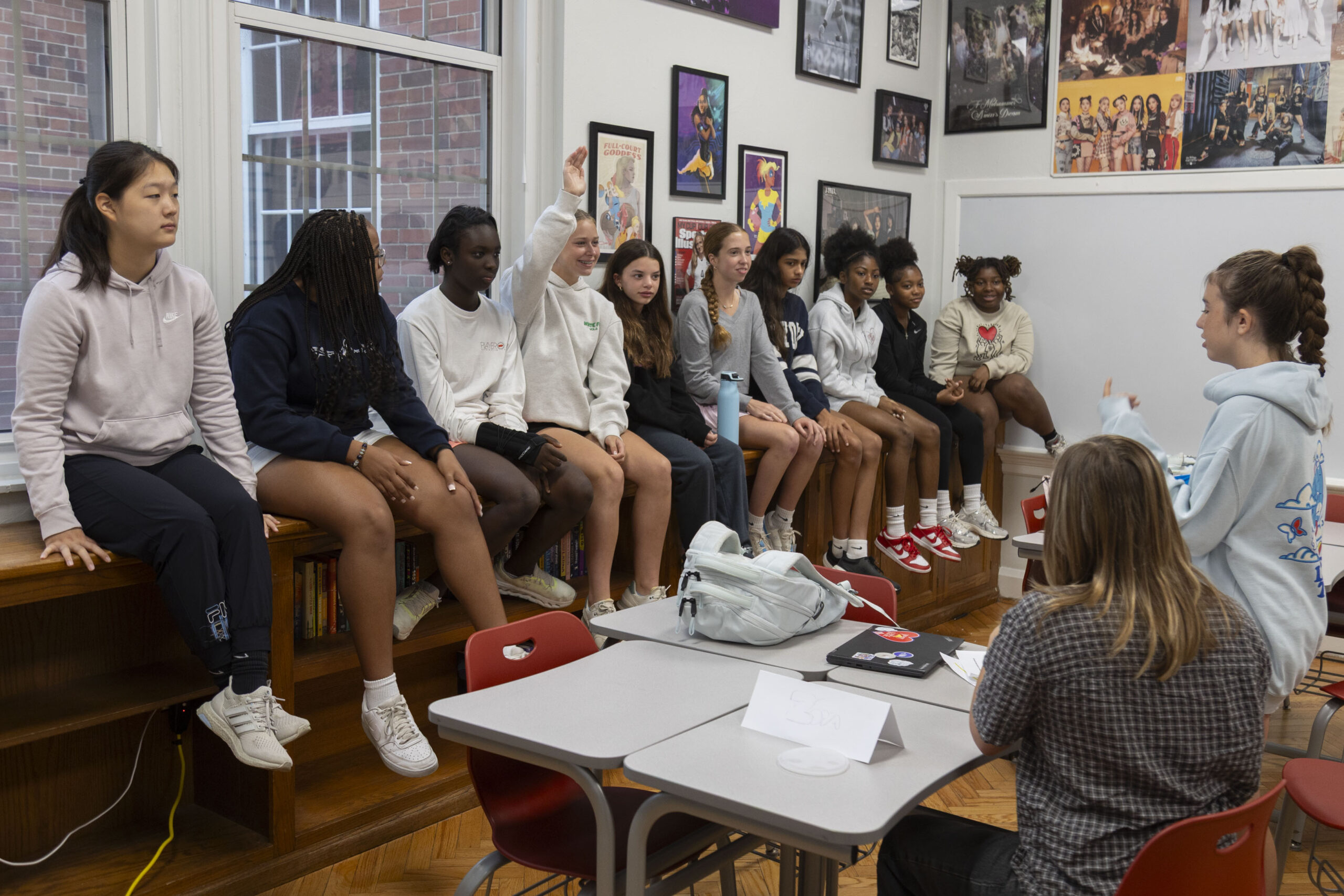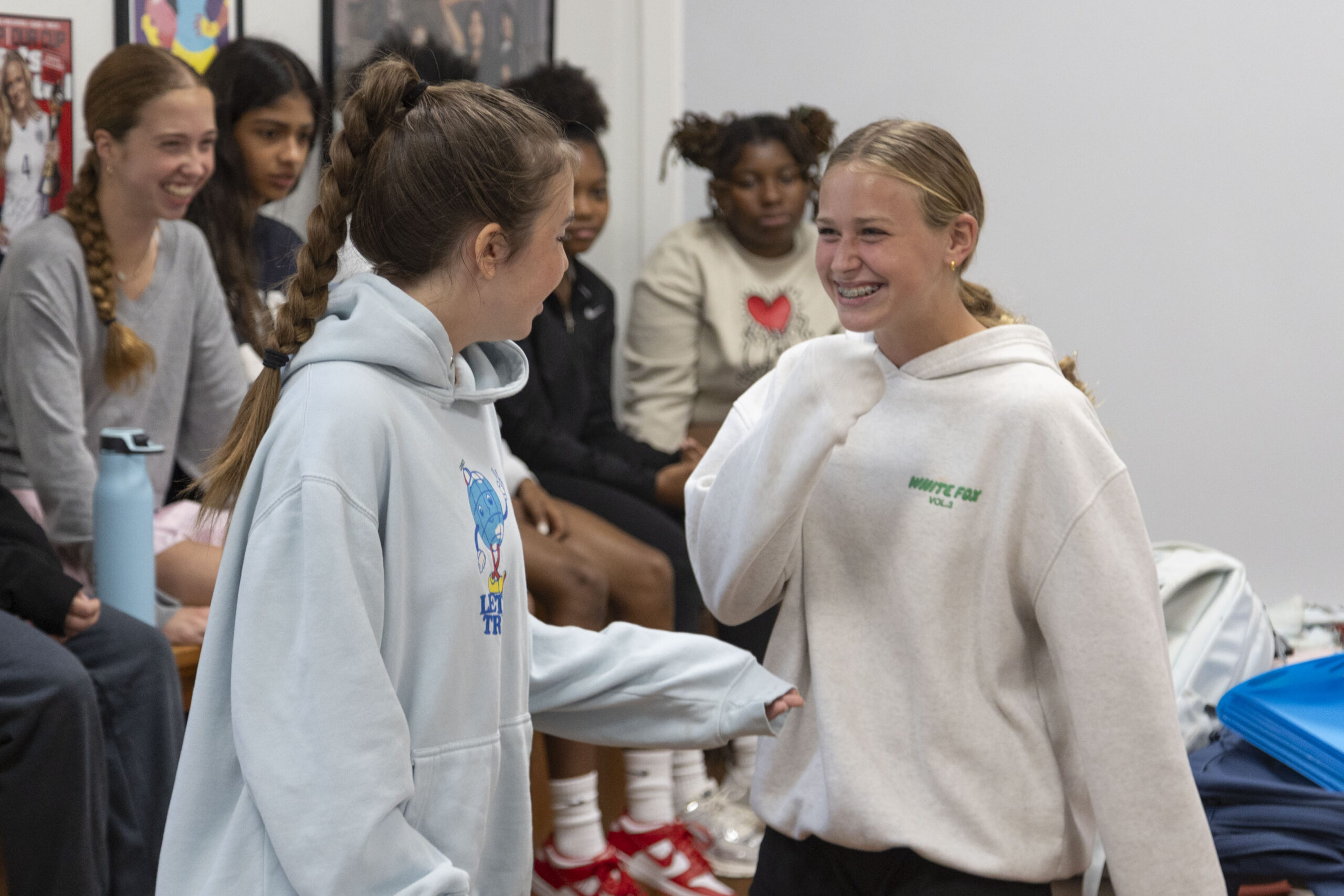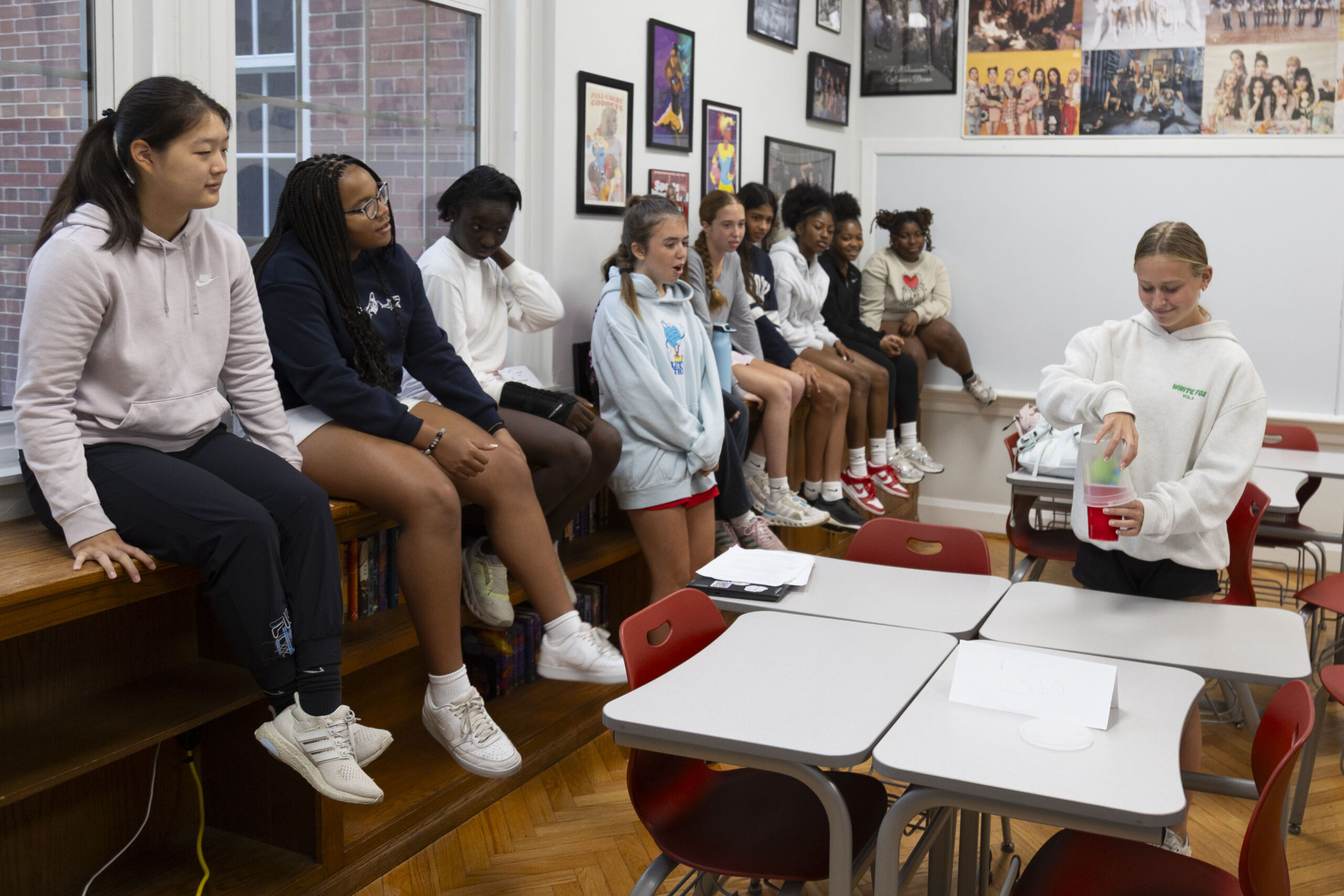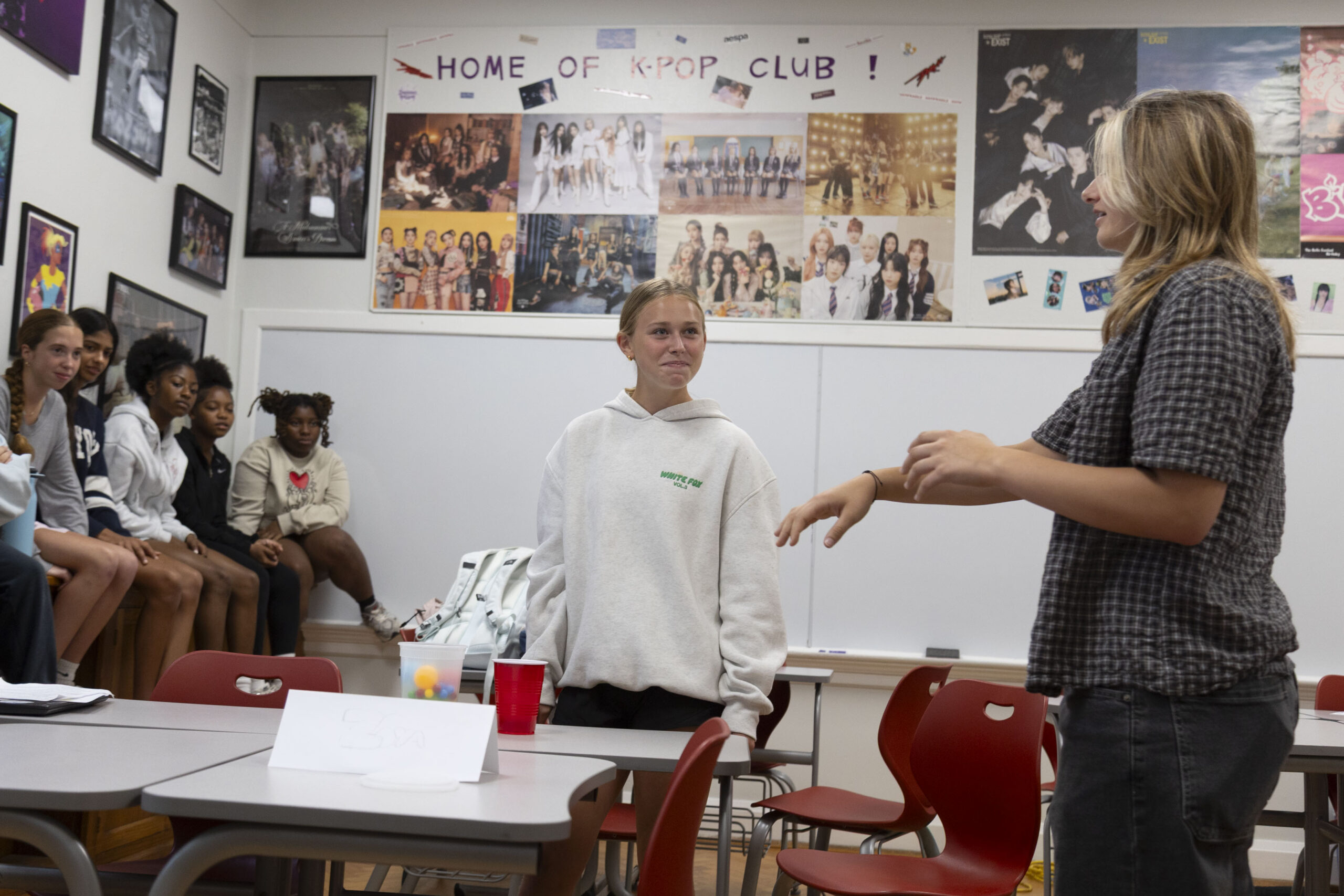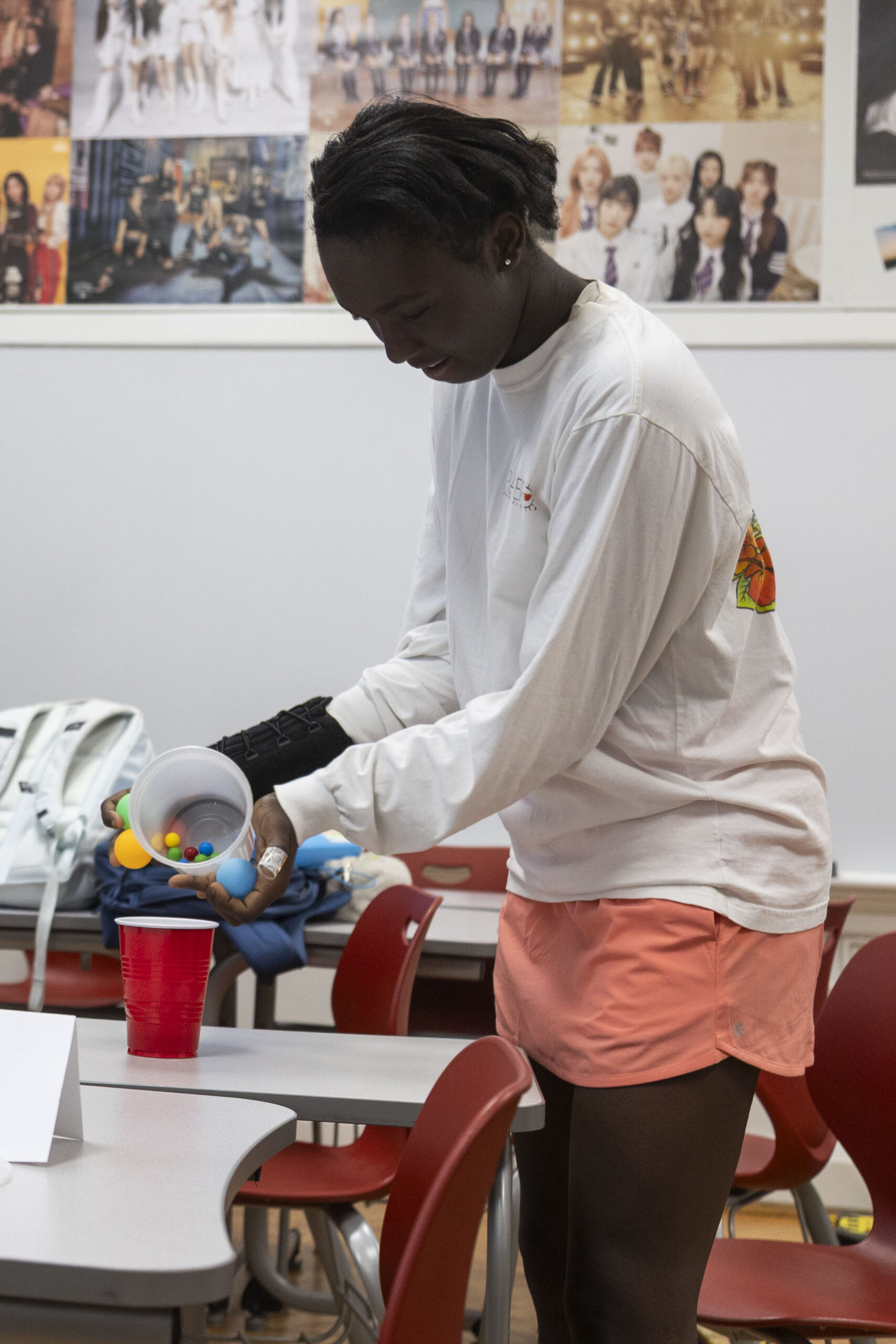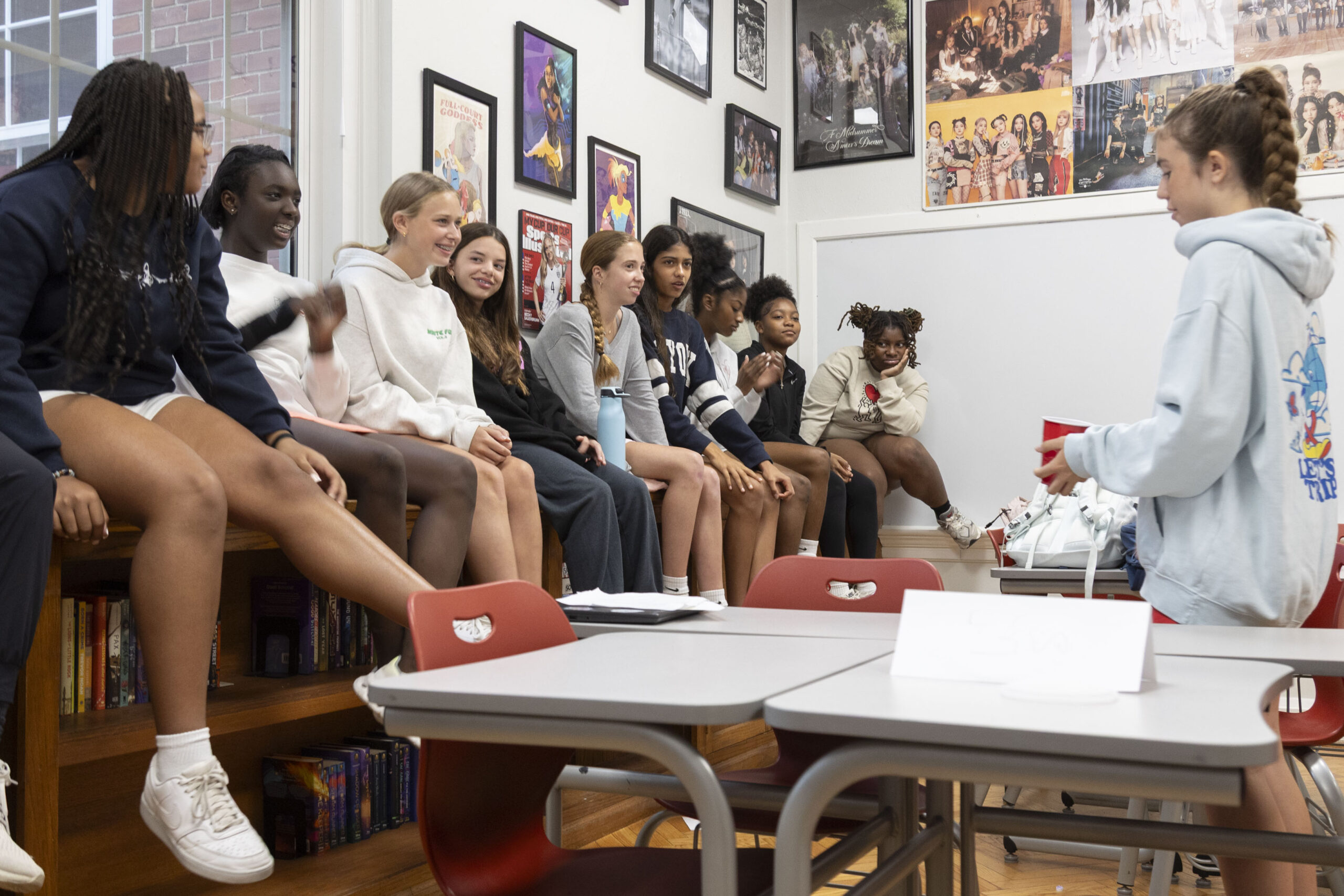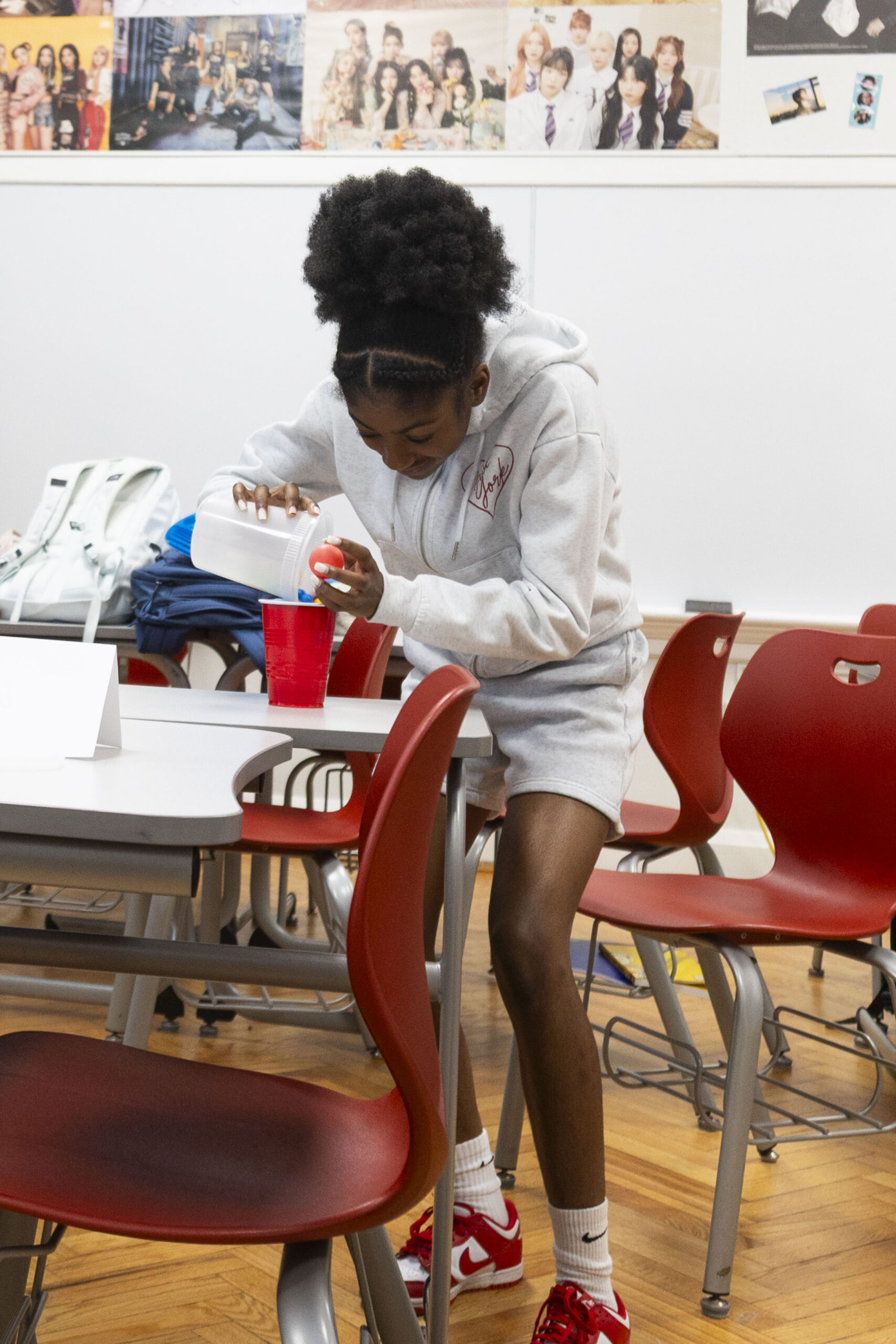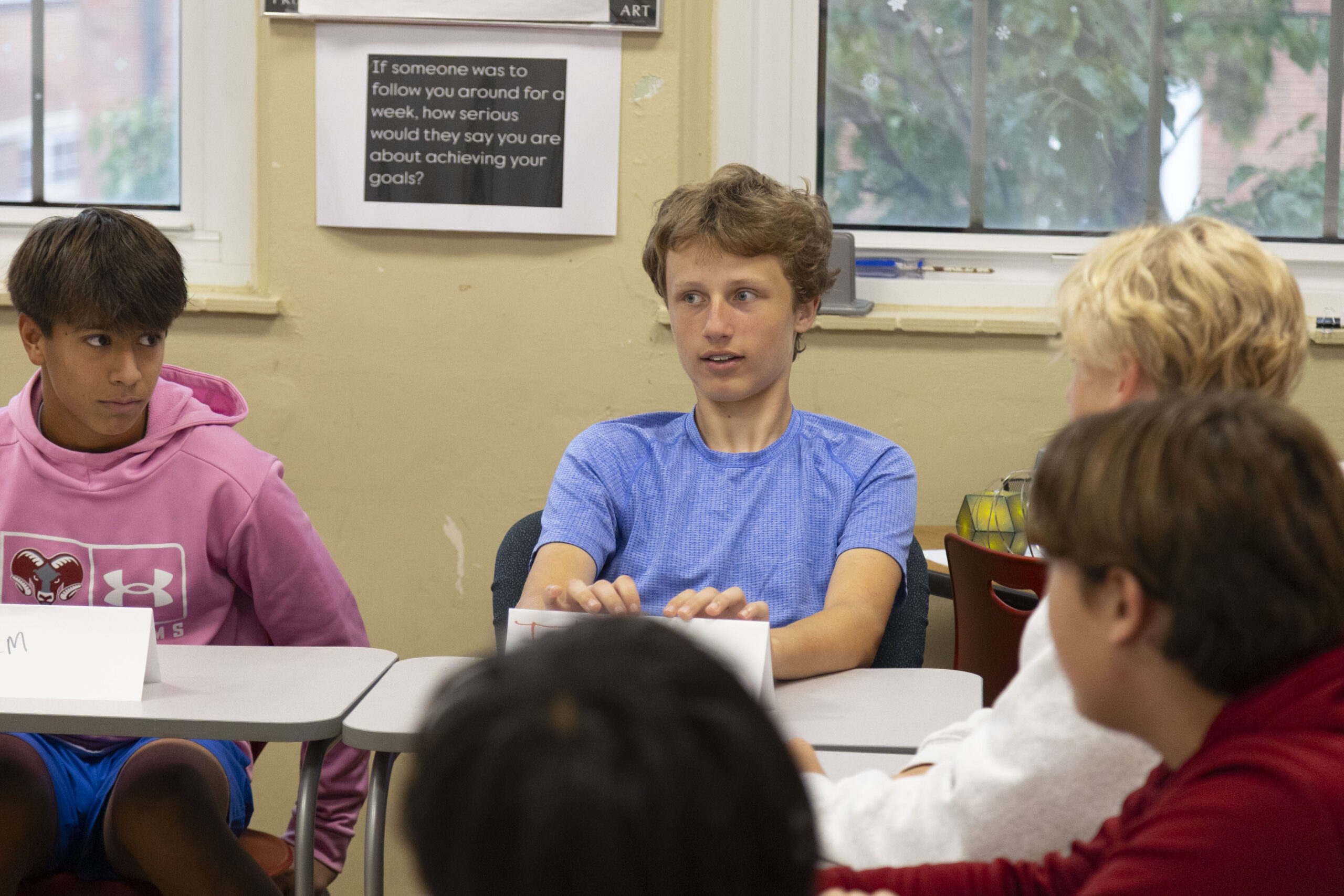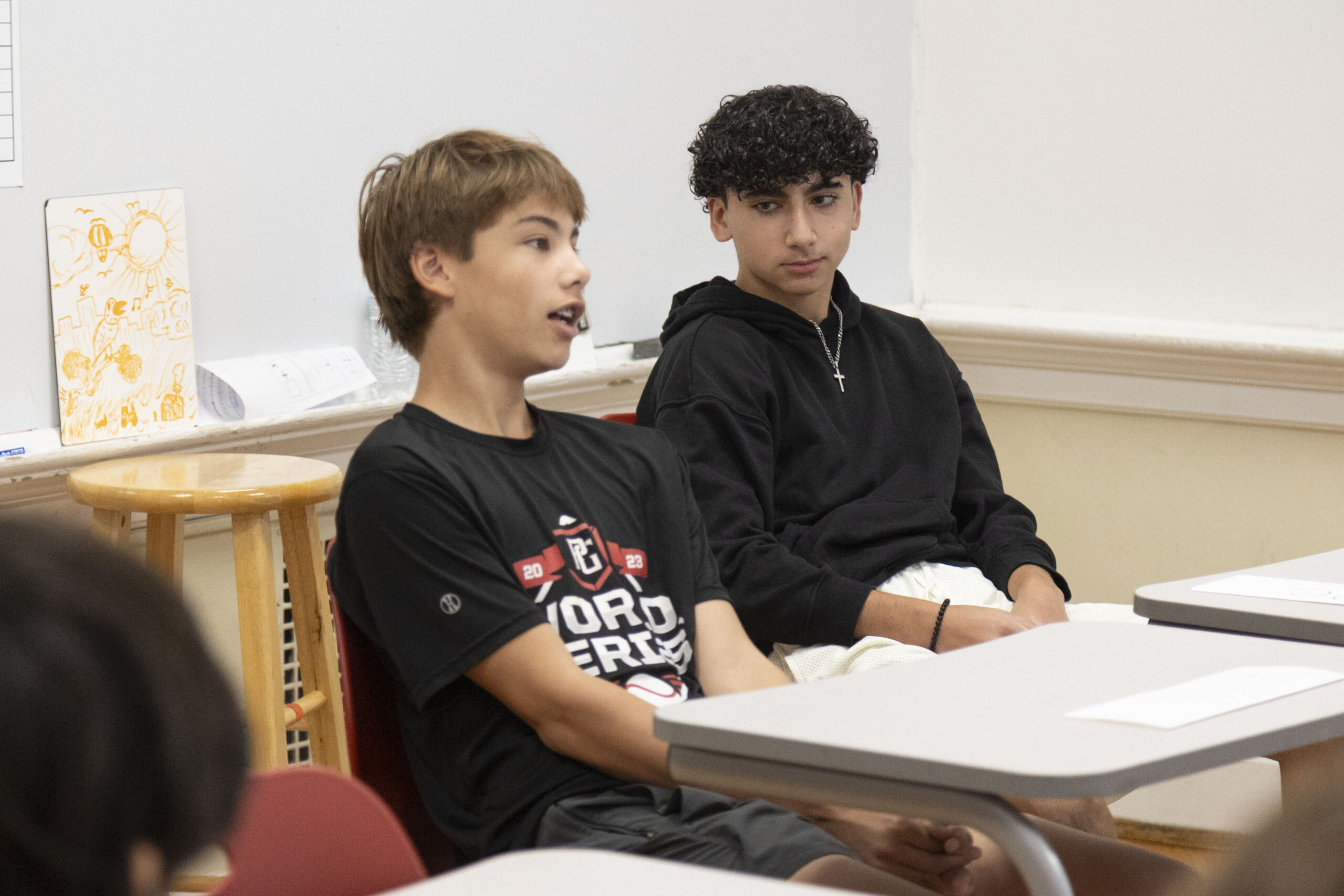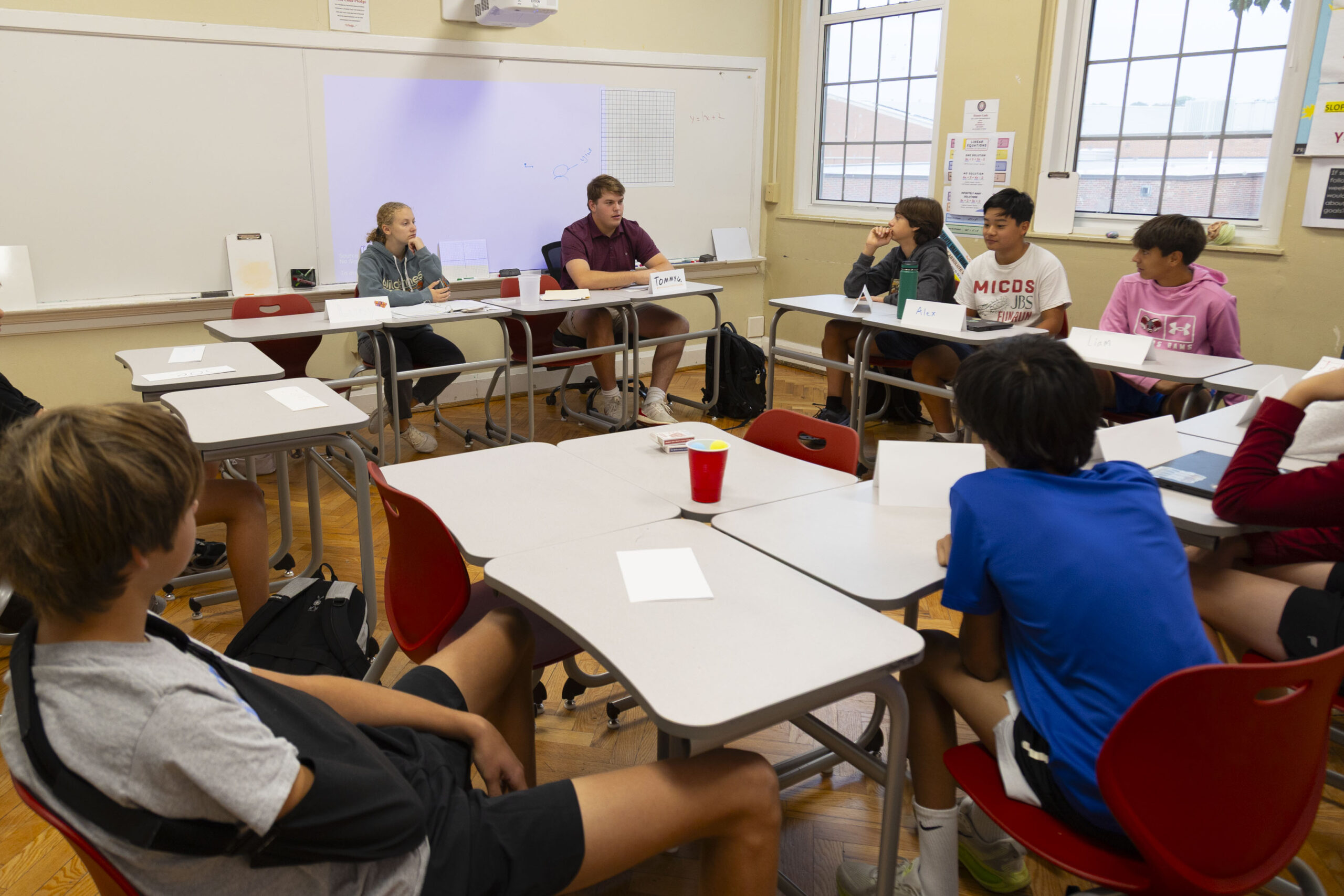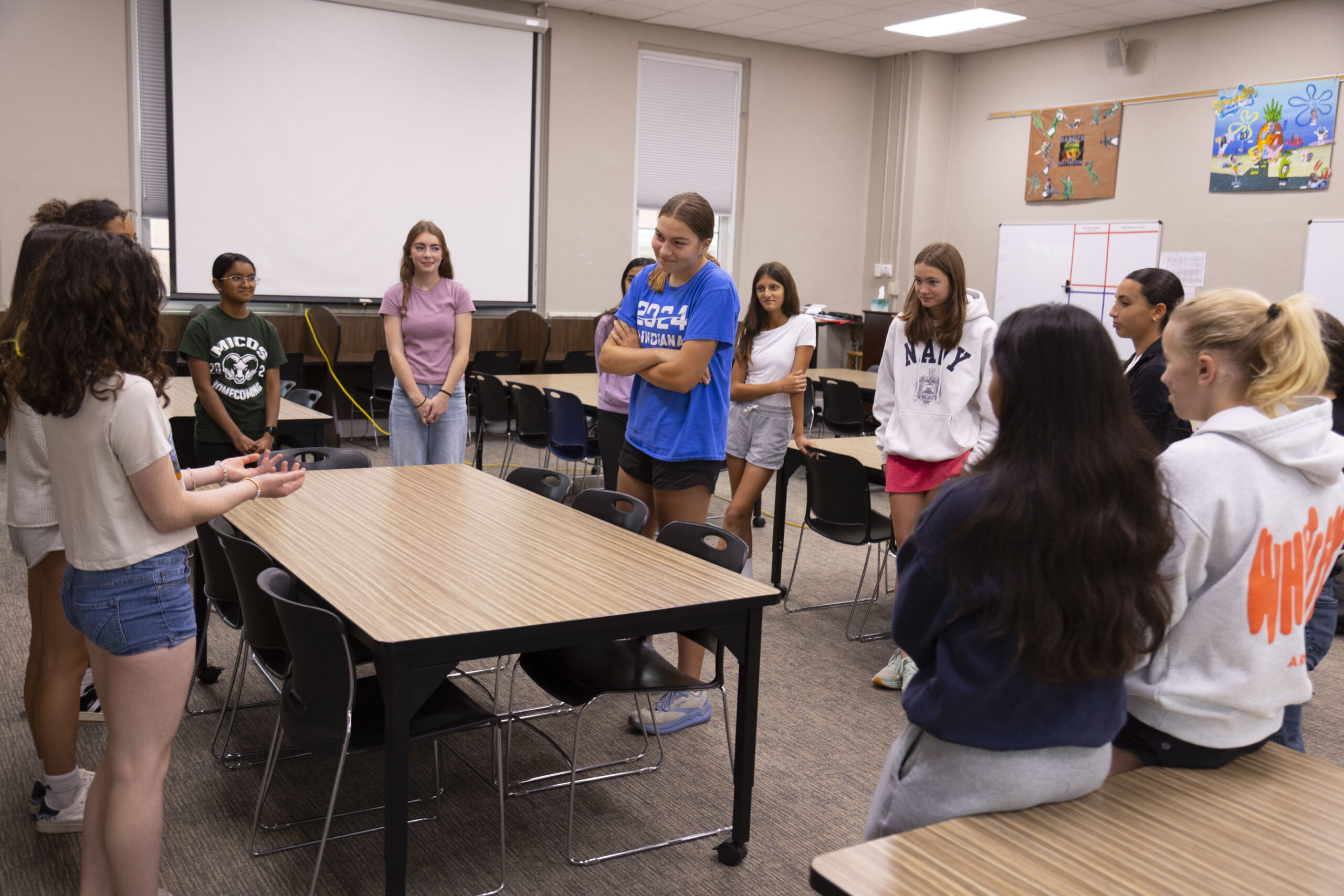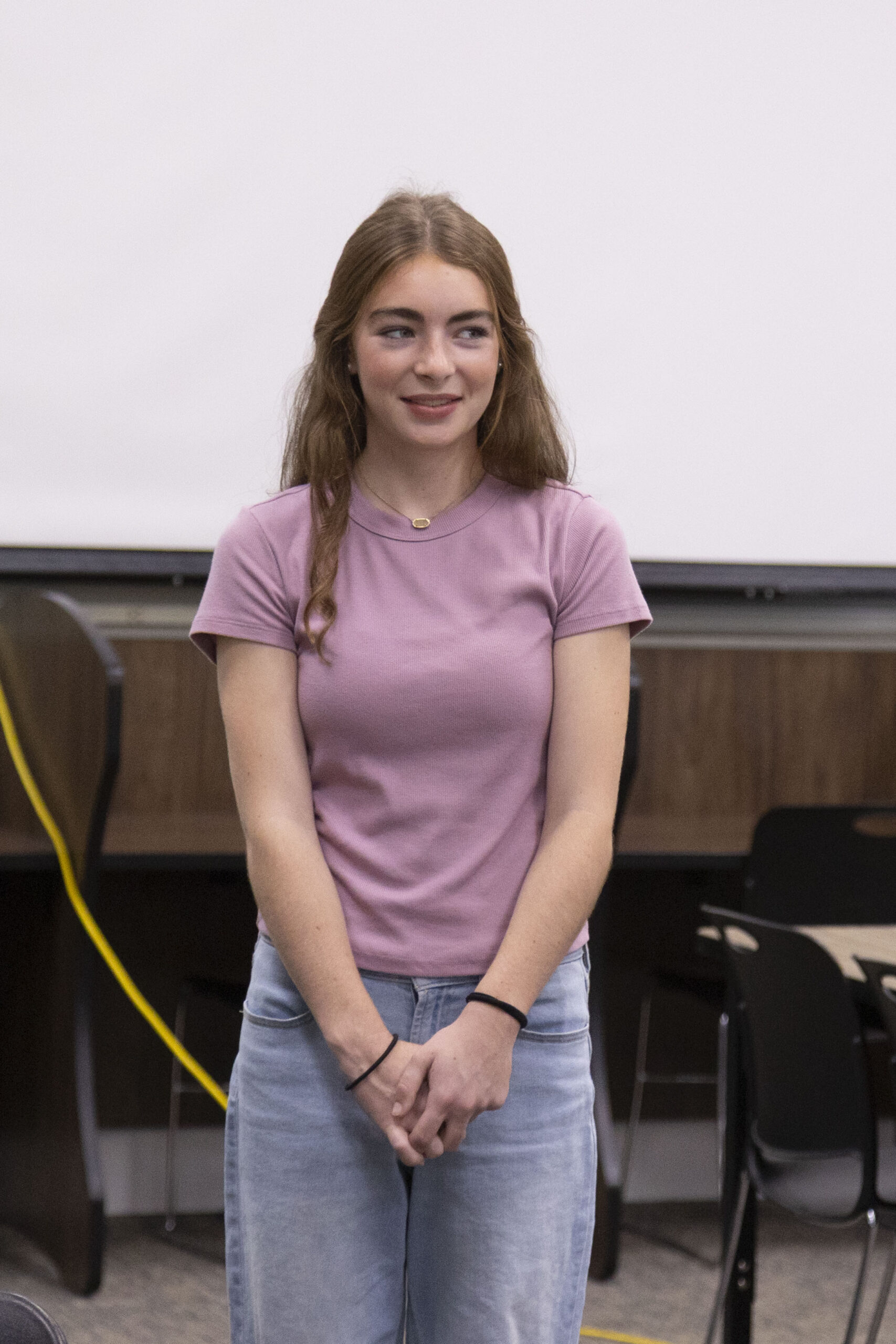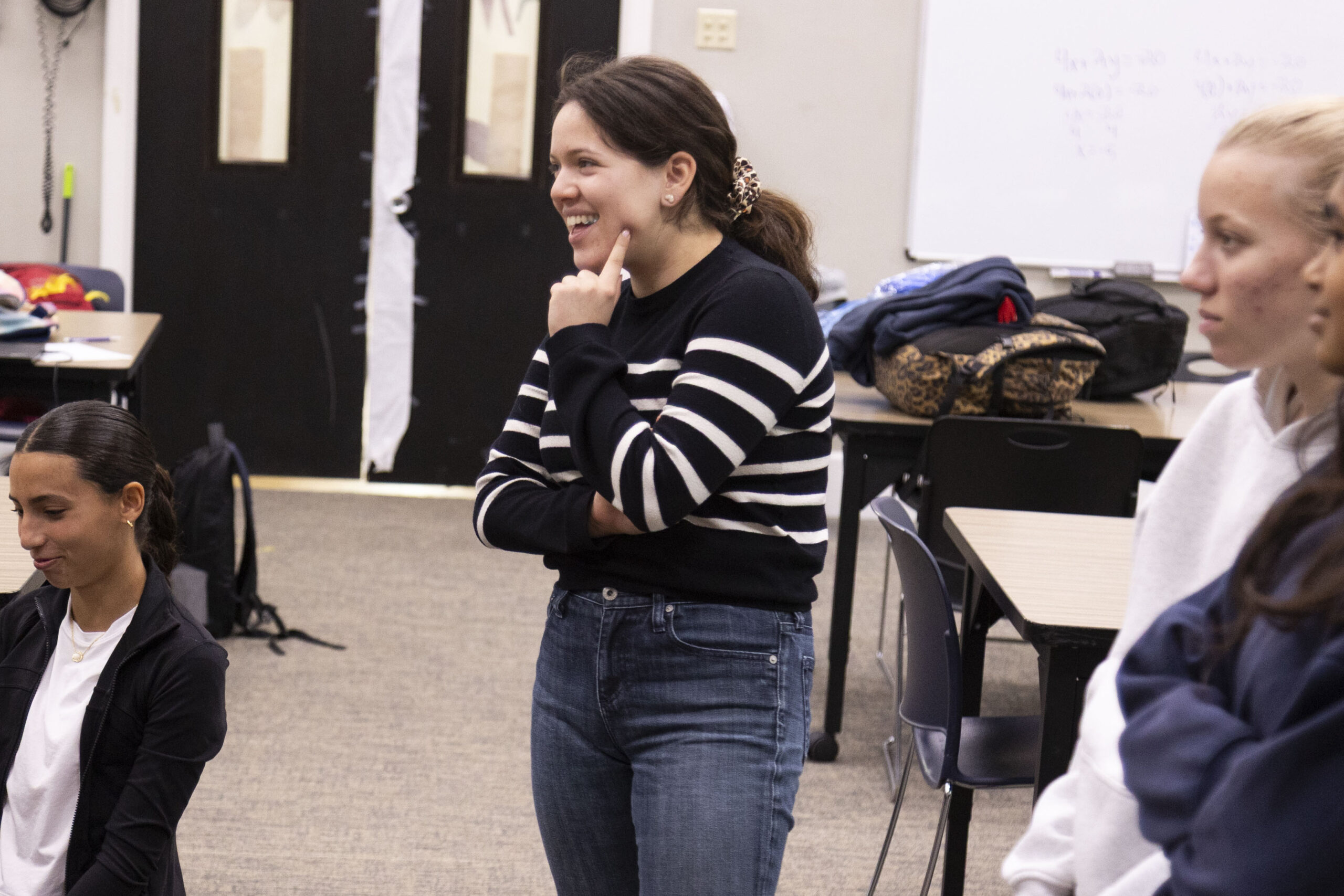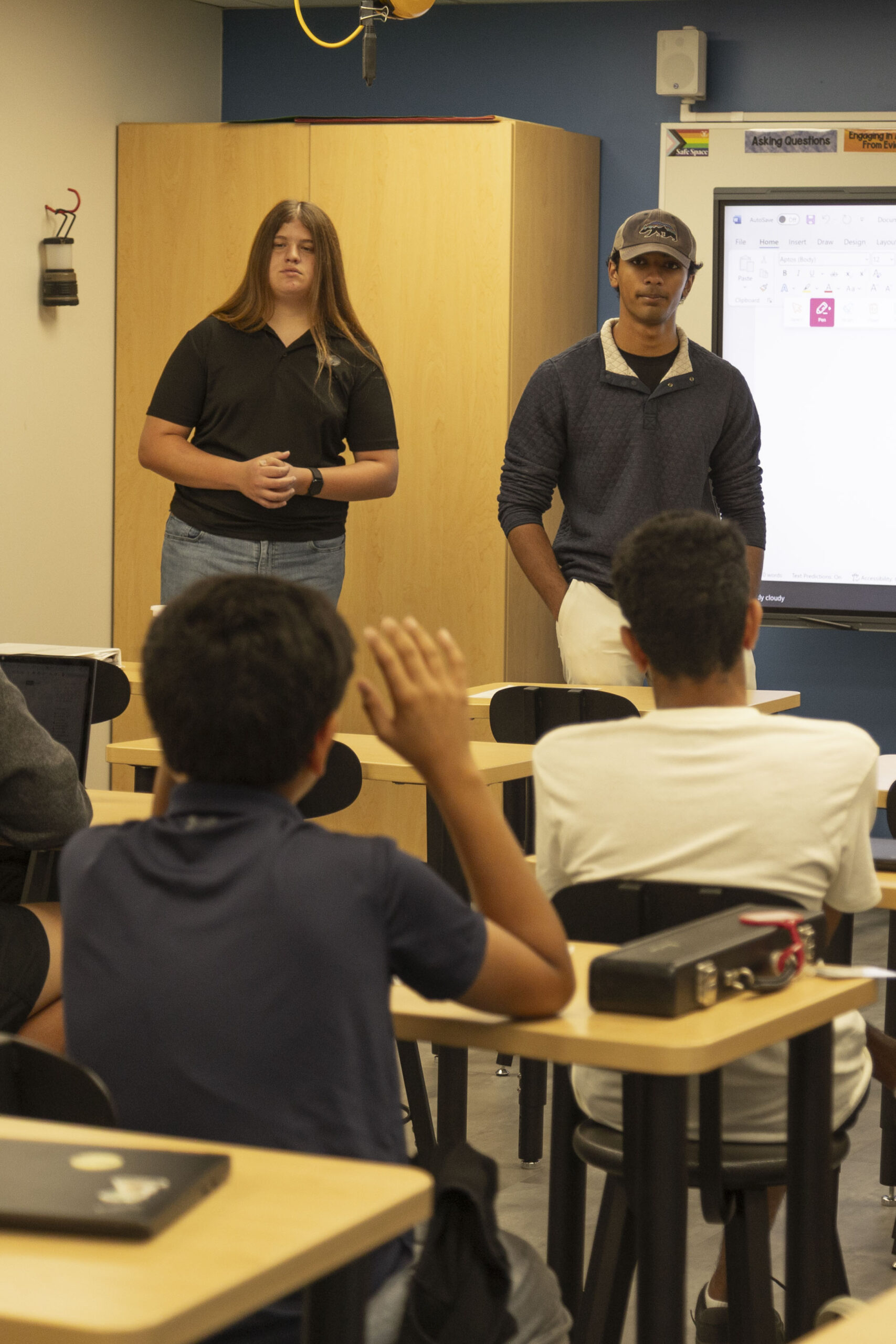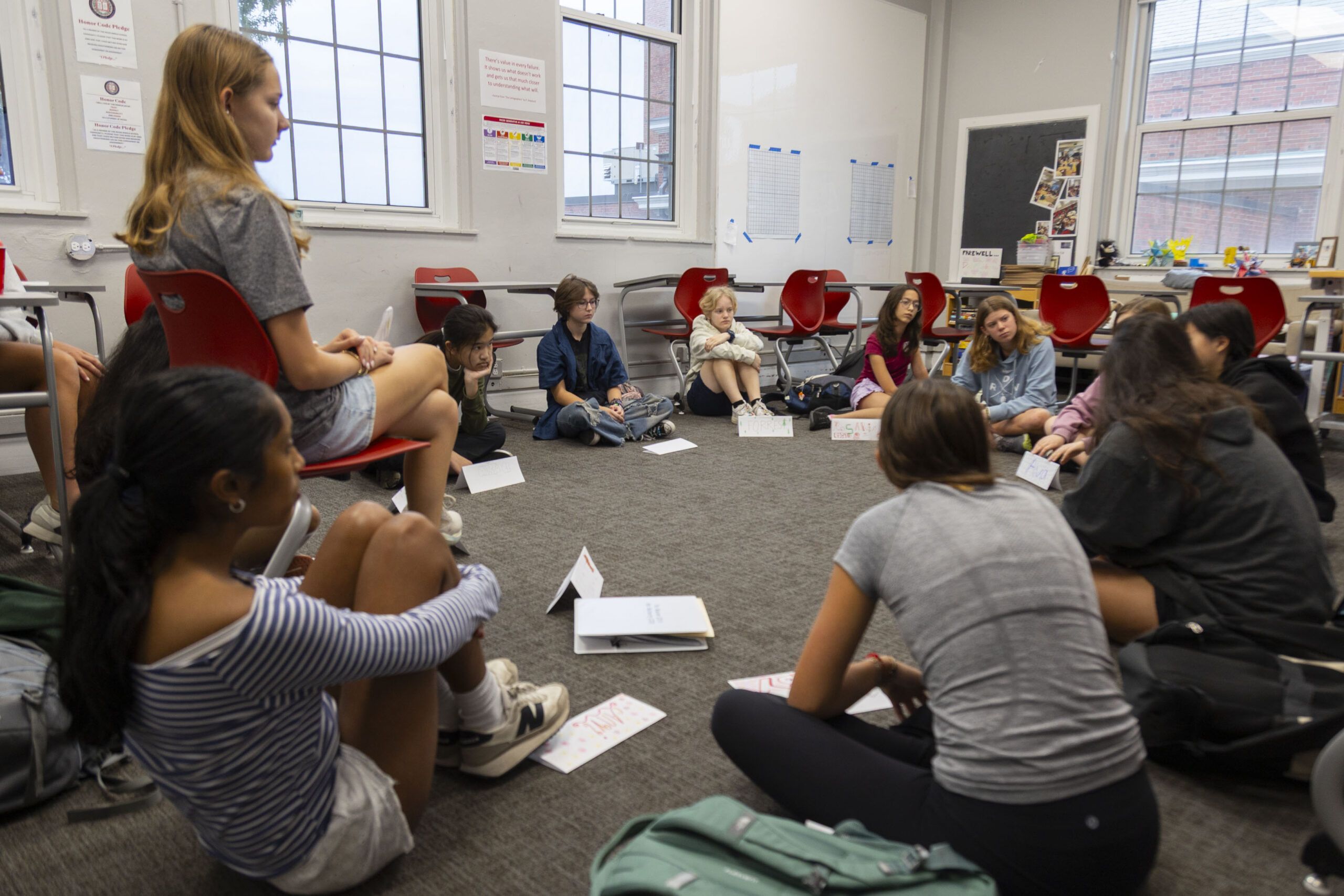The eighth year of the MICDS Peer-to-Peer (P2P) program is already underway and building momentum this year through a dedicated group of over 60 Upper School students. This cross-divisional program connects Upper and Middle School students, providing a safe and authentic space where Middle Schoolers can navigate the complex challenges of their world. The mentors, led by Director of Student Services Dr. Sheila Powell-Walker, Middle School Science Teacher and Community Coordinator Callie Bambenek, and Middle School Counselor Erin Sutherlin, meet six times throughout the year with seventh- and eighth-grade advisories, where they share their personal experiences and lead conversations on critical topics including self-esteem, healthy relationships, and social media. The mission-driven effort to empower younger students to think critically, act responsibly, and nurture compassion is even more impactful when shared through the honest voice of a peer mentor.
Maddie Karr ’27 has been on P2P for two years, and this year serves as a member of the leadership team. “I chose to be a part of this program because I wanted to give back to my Middle School community that helped me prepare for high school,” she said. “In Middle School, I really looked up to my Peer-to-Peer mentors, and they helped me prepare for high school, as I was very nervous! As a high schooler, I want to provide that confidence for the Middle Schoolers and be someone they can look up to, helping them through their MICDS journey.”
Preparation for Authentic Connection
The P2P program’s success is rooted in preparation. Mentors spend months learning leadership skills, establishing group norms, and practicing delivering sessions effectively. When they meet the Middle Schoolers, their main objective is to be authentic and relatable. To foster that connection, every session starts with icebreakers before diving into the core topics. Their training ensures the advisory room remains a safe and productive space built on trust, where confidentiality is essential and all opinions are respected.
Hands-On Learning and Key Topics
Every session starts with icebreakers before diving into the core topics. To foster genuine engagement, the mentors use activities designed to encourage honest self-reflection and group discussion.
One activity during the self-respect session included a circle game in which students identified their similarities and differences with prompts such as “step forward if you: have a pet or a sibling, play a sport, play an instrument, are a morning person,” etc. Another included drawing the “Circle of Influence,” which illustrates how much the presence of others in your circle influences you as a person. As they move closer to the middle, they have a greater impact on personality and decision-making, which highlights the importance of surrounding yourself with good friends.
In the eighth-grade time management sessions in week two, Upper Schoolers shared tips on meeting with teachers outside of class, working with the Student Services department (counselor, learning specialist, nurse), time management and finding balance, finding ways to thrive in school as well as athletics and activities, efficient strategies for managing school work, anxiety around their own academic high expectations as well as those of their parents, teachers, and other students, how to best work with group projects, and more.
The students then participated in a “finding balance” activity called Big Ball/Little Ball, where they had to fit as many differently sized balls into a jar as possible within 10 seconds without the container overflowing. Each ball represents their big projects/goals, medium-sized goals and activities, and other wants and needs. This activity helped students understand the importance of using their agency and discernment to balance their various responsibilities and interests.
Below is the journey for both grade levels throughout the year, with each conversation carefully designed to build on previous discussions.
| Seventh Grade | Eighth Grade |
|
|
Building Bonds & Shared Growth
Karr shared, “The most meaningful part of mentoring is being able to establish relationships with the Middle School students. As high school students, we don’t often get to interact with younger kids, but Peer-to-Peer gives us that opportunity to talk to them. Having experienced the programs on both sides, it’s really magical to watch the bonds form between the middle and high school students as the year goes on!”
“I have served on Peer-to-Peer for three years now, and I choose to because I enjoy mentoring and conversing with people,” said Cade Miller ’26. “I also thoroughly enjoyed my time in Middle School; it was a blast. In becoming a mentor, I hope to share bits of what I’ve learned as a high school student and offer advice about some of the things that affected me in Middle School. I find the program very fulfilling.
“The most meaningful part of mentoring the Middle School students is building lasting connections with the students. I see quite a few former students I once mentored now as they’ve entered high school, and I think it’s nice to continue the supportive relationship I have made with them.
“Through my service, I hope they will be more confident walking in their own path, and well educated in how to make the most of their time at MICDS.”
Max Padratzik ’27 added, “The most meaningful part about mentoring Middle School students is to be able to give back to students with insight about ways to succeed in all aspects of life. It’s really fulfilling to me.”
A huge thank you goes to our dedicated Upper School mentors and P2P leaders. We look forward to watching these connections offer relatable guidance that helps every Ram grow!
